BACKCOUNTRY JOURNAL







The first night my cousin and I set camp on the only semi-flat spot we could find. We wanted to go a bit farther, but the fading vestiges of light told us otherwise. The rocky finger ridge covered in snow would have to do.
We quickly worked to set up the teepee, an act made difficult by the terrain. After breaking a few stakes, we used paracord and rocks to secure our shelter. While I unpacked the stove, my cousin gathered wood, which was easy because we were in the middle of a burn. Luckily, we had somehow found the spot with no widow makers but plenty of dry timber. The first crackle of the fire warmed our bodies and our souls.
As we went to bed that night we were greeted by the wind. You could hear it come over the top of the ridge, whistle through the trees, and then hit the teepee with force. The powerful gale was both impressive and unnerving. Little sleep was had.

The next day we left camp and ventured into a spot new to us that held much promise. As we explored the nooks and crannies of one of the only areas with standing dark timber, however, we found nary a trace of elk track. Plenty of old sign was visible, but the wapiti had cleared out. What we thought would have been a refuge for wary bulls was a quiet landscape. We saw one bird that I failed to identify. A second cousin joined us that night, and once again we stoked the fire and settled in for the night.
The wind picked up again. But instead of coming in waves, it was constant. Snow had melted around the shelter, and gaps to the outside world were apparent.
The first time I heard the roar of gust as it came over the ridge, I thought it was an airplane buzzing the tower. The sustained winds whistled through the trees; the gusts roared. The teepee shook violently, walls collapsing and then springing back to form. With headlamps on we ventured outside and found more rocks to bolster our shelter … in one spot building a bit of a wall to cover the gap. Feeling satisfied with our extra security, we returned to the warm refuge.
All night the wind persisted, as well as the gusts. We extinguished the fire; the stovepipe kept being lifted off the stove as the wind brutalized our teepee. Even less sleep was had, but we made it through the night. With no sign of our quarry, we broke camp after breakfast and hiked out the four miles to the trailhead. In some ways we felt defeated; in others we were invigorated by facing the elements.
Many plans were laid on the walk out for future endeavors. Next year we will return earlier in the season and change our luck, hope being the eternal driver.
Similar to those nights I spent with my cousins on the edge of the Bob Marshall Wilderness, we all are emerging from the past twoplus years and the constant winds of covid. We’ve learned a lot and have many hopes and dreams for 2023.
Nothing like a Seek Outside teepee to weather the storm.
First and foremost, we’re looking forward to getting back together in person. At BHA, our energy is fueled by each and every one of you. Like my first night in the wilderness, I feel and hear the gusts we have met over the past few months. It’s high time to channel that force in support of the values we all share. Our 12th annual North American Rendezvous will take place in Missoula, Montana, March 16-18, 2023. Join us. What an occasion it will be!
Together we’ll generate energy to power our work – from our efforts on the ground on up to the halls of Congress. Restoring bison on our public lands and replacing the missing capstone of our conservation pyramid. Passing the Recovering America’s Wildlife Act and generating funding for at-risk species of wildlife. Pioneering a solution to the problem of feral horses and burros on public lands in the West. Resolving the conflict over corner crossing and opening up equal-opportunity access to all our lands and waters. Perpetuating and enhancing the North American Wildlife Model of Wildlife Conservation and securing the future of our cherished fish and wildlife populations. Continuing our battle to protect the special places in North America that are central to our identities as hunters, anglers and public lands advocates. These are just a few of the fights I’m excited to join you in the arena to tackle head on –and to win.
The time, talent and treasure you all give to this great organization are the rocks that secure our conservation legacy. None of it can be accomplished alone. As 2022 ends, I offer you a hearty thank you for your continued efforts – and look forward to continuing our work in the new year. Together we will carry the day.
Ted Koch (Idaho) Chairman
J.R. Young (California) Vice Chairman
Jeffrey Jones (Alabama) Treasurer
T. Edward Nickens (North Carolina) Secretary
Land Tawney, President and CEO
Tim Brass, State Policy and Field Operations Director
John Gale, Conservation Director
Frankie McBurney Olson, Operations Director
Katie McKalip, Communications Director
Rachel Schmidt, Innovative Alliances Director
Dr. Keenan Adams (Puerto Rico)
Ryan Callaghan (Montana)
Bill Hanlon (British Columbia) Jim Harrington (Michigan)
Chris Borgatti, New York and New England Chapter Coordinator
Travis Bradford, Video Production and Graphic Design Coordinator
Veronica Corbett, Montana Chapter Organizer
Trey Curtiss, R3 Coordinator
Katie DeLorenzo, Western Regional Manager and Southwest Chapter Coordinator
Kevin Farron, Montana Chapter Coordinator
Britney Fregerio, Controller
Brady Fryberger, Office Manager and Executive Assistant to the President and CEO
Chris Hager, Washington and Oregon Chapter Coordinator
Andrew Hahne, Merchandise and Operations
Aaron Hebeisen, Chapter Coordinator (MN, WI, IA, IL, MO)
Chris Hennessey, Regional Manager
On the Cover: Artwork by
Hilary Hutcheson (Montana)
Dr. Christopher L. Jenkins (Georgia)
Ben O’Brien (Montana)
Michael Beagle (Oregon) President Emeritus
Jameson Hibbs, Chapter Coordinator (MI, IN, OH, KY, WV)
Trevor Hubbs, Armed Forces Initiative Coordinator
Josh Kaywood, Southeast Chapter Coordinator
James Majetich, Alaska Chapter Coordinator
Kate Mayfield, Operations Coordinator
Kaden McArthur, Goverment Relations Manager
Jason Meekhof, Events and Special Projects Coordinator
Josh Mills, Conservation Partnership Coordinator
Erin Nuzzo, Grants and Annual Giving Coordinator
Devin O’Dea, California Chapter Coordinator
Brittany Parker, Habitat Stewardship Coordinator
Thomas Plank, Communications Coordinator
Kylie Schumacher, Collegiate Program Coordinator
Ryan Silcox, Membership Coordinator
Brien Webster, Program Manager and Colorado and Wyoming Chapter Coordinator
Zack Williams, Backcountry Journal Editor

Interns: Marissa Acosta, Alexis Cichon, Sarah Garner, Jordyn Jackson, Jenna McCrorie, Faith Wells
Jackson,
by Jamil Fatti. Read “All the Right Words” on page 45 for the backstory.
P.O. Box 9257, Missoula, MT 59807 www.backcountryhunters.org admin@backcountryhunters.org (406) 926-1908
Backcountry Journal is the quarterly membership publication of Backcountry Hunters & Anglers, a North American conservation nonprofit 501(c)(3) with chapters in 48 states and the District of Columbia, two Canadian provinces and one Canadian territory. Become part of the voice for our wild public lands, waters and wildlife. Join us at backcountryhunters.org

All rights reserved. Content may not be reproduced in any manner without the consent of the publisher.
Published Dec. 2022. Volume XVIII, Issue I
Kobe photo Above Image: Will Woodruff, 2021 Public Lands and Waters Photo Contest Aaron Agosto, Andrew Bartoe, Cayla Bendel, Jeff Benda, Charlie Booher, Brandon Dale, Max Dickinson, Patt Dorsey, Marcy Fryt, Hudson Gardner, Melissa Hendrickson, Trisha Hedin, Kjell Hedström, Jamie Karambay, Drew Kazenski, Ed Kiokun, Jake Lunsford, Perrin Pring, Christopher Ross, Kyle Shaney, Cliff Shrader, A.R. Thompson, Barry Whitehill, Kai WhitehillJOIN THE CONVERSATION
“A TRUE CONSERVATIONIST IS A MAN WHO KNOWS THAT THE WORLD IS NOT GIVEN BY HIS FATHERS, BUT BORROWED FROM HIS CHILDREN.” -JOHN JAMES AUDUBON






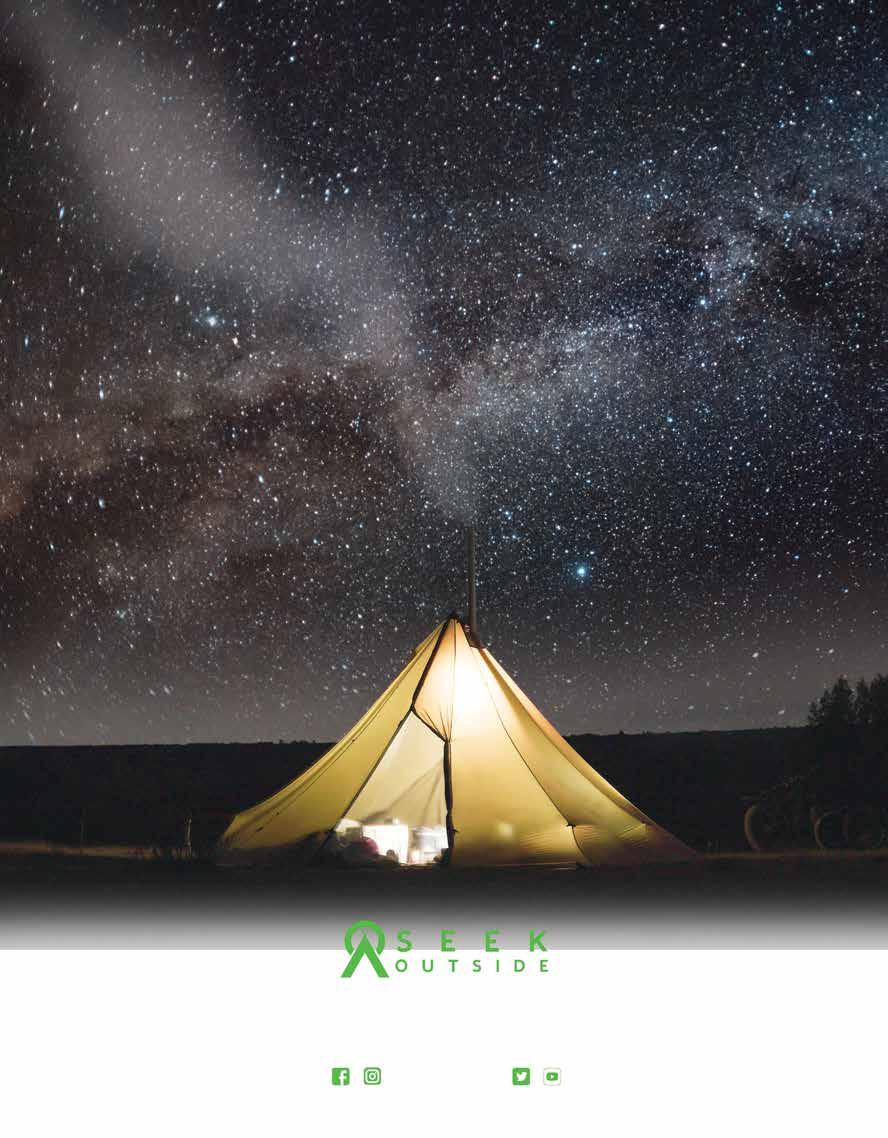

Cattails rustled as my setter lowered stiffly into a crouch. Frozen in place, only his nostrils flared with the scent of wild pheasant. Flapping wings and color erupted from the vege tation. I shouldered my side-by-side and watched the rooster fold.
Wherever that scene took place, it’s far from here.
Wrestling a plastic bottle from the jaws of my young gun dog, ending his triumphant lap around the red dirt parking lot, was a vibrant reminder of that moment.
I was in the Piedmont of the Carolinas, far from pheasant. Here, quail are more of an old rumor than huntable game bird. While whispers of optimism surround Gentleman Bob, they’ve mostly disappeared along with the old farms and pine savannas that supported them.
As with most places, though, there are riches to be had for those able to donate time and tread.
Autoloader in hand, I listened for the “meep” of my red compact SUV, signaling it was locked. We began our hike. Dawn flooded the forest floor, and clouds of breath emanated from from my mouth and the mouth of my dog on this frigid morning commute.
Cold is a seasonal companion here, providing reprieve from snakes and biting insects. It made this trip feasible.
History taught me to put at least a mile or two between us and the car, or the dog and I wouldn’t be alone. The path is an old logging road that winds through the famed rolling red hills of oak, hickory and pine.

Steep timbered terrain transitioned into the flat, spongy to pography of our destination. Shrill cries of a wood duck wel comed us with the first glimpse of the river.
I commanded the dog to heel.
He sprinted off.
We both knew where he was going
No electric collar or whistle, not even the biting cold, keeps him dry for long. Nothing dissuades him from completing his performance – regularly leaping into the first stagnant puddle, oxbow or stream we come across. I’ve reluctantly learned to let him get it out of his system and dodge the dramatic wet shakes.
As with many areas in the eastern United States, the pivot from clearcutting forests in the mid-1900s to implementing policies of a limited timber harvest led to an overabundance of single-aged mature forests. The dams built to reduce flooding and efforts to snuff out forest fires have also contributed to
this. With no natural or artificial perforations in the canopy and limited sunlight released to the forest floor, vital young forests and cane break habitats have vanished from many areas.
Help, however, is on the way.
A revival of prescribed fires and increased timber harvests –aimed at reestablishing the long leaf pine savanna that is home to the endangered red-cockaded woodpecker – has led to a speckling of improved habitat across the Piedmont and coastal plain.
Cane breaks are a personal favorite, comprised of American riv er cane. It’s a native species of bamboo that grows in long riparian groves and was once used by Native Americans for various tools and blowguns here in the Southeast.
The Great Pee Dee, Saluda and Yadkin rivers drain great swaths of the region, where rain and mechanical releases push water in and out of cane and privet river bottoms like an erratic tide, leaving puddles and damp forests. These combine with late season acorns to provide a winter oasis for migratory species, which come in great numbers when snow blankets the upper reaches of the continent.
Despite my shortcomings in training, my dog’s merry nature evolved into focused work as we reached our first cane break. Head down, he plunged in and out of the dense foliage. A trail of ele vated leaves and swaying cane marked his passage, as his short legs kept him well below my line of sight. As he maneuvered through mid-story branches and ankle-deep water, I tried to keep an eye out for woodcock. They seemed to be nowhere, until suddenly fire works of brown and auburn launched from underfoot into the air.
I learned to trust that if there are birds to be had, the dog will put them in the air and retrieve them – not to hand, but close enough.
An armadillo was our initial discovery. Deeper into the wood land we went. I noticed the dog stop, turn 90 degrees and zigzag to ward an ambiguous location. The telltale sign of impending action was followed by gunshots, feathers and a few birds on a game clip.
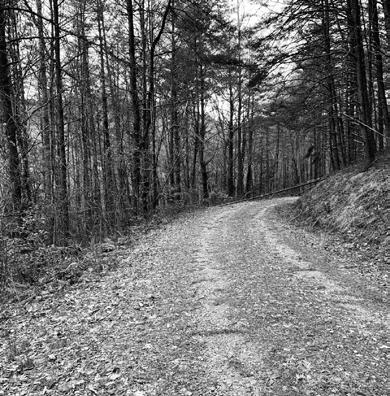

After I cleaned the birds, I allowed them to cool during the re mainder of our walk. We continued, dissecting every patch of suit able habitat found along our route. Hours and miles passed with no more flushes. Eventually, the trail rounded a corner and signified the nearing conclusion of our hunt.
Finally willing to heel alongside me, we examined our last pros pect. Slipping along the perimeter of a flooded acre of privet and oak, our eyes scanned for the drakes and hens we’ve seen here be fore.
Not today. Our trophies were two-thirds the limit of timberdoo dle, sore legs and the liberation brought upon by a hard hunt in a southeastern wilderness expanse.
Few wall paintings or magazine covers depict the hunt for an obscure, often overlooked gamebird in a region ripe with humidity and reptiles. Nevertheless, the endless miles of forested creeks and streams, which run through the national forests and state lands, of fer rich opportunities and purpose to gun dog owners looking for wild quarry and a place to get lost.
Back at the car, I tossed the newly acquired soda bottle in the car for later disposal. An hour or two of pavement separated us from college football, hot showers and drinks.
BHA member Andrew Bartoe is a Great Lakes native living in the Carolinas. He’s a proud husband, gun dog owner, craftsman, angler and an engineer by trade.

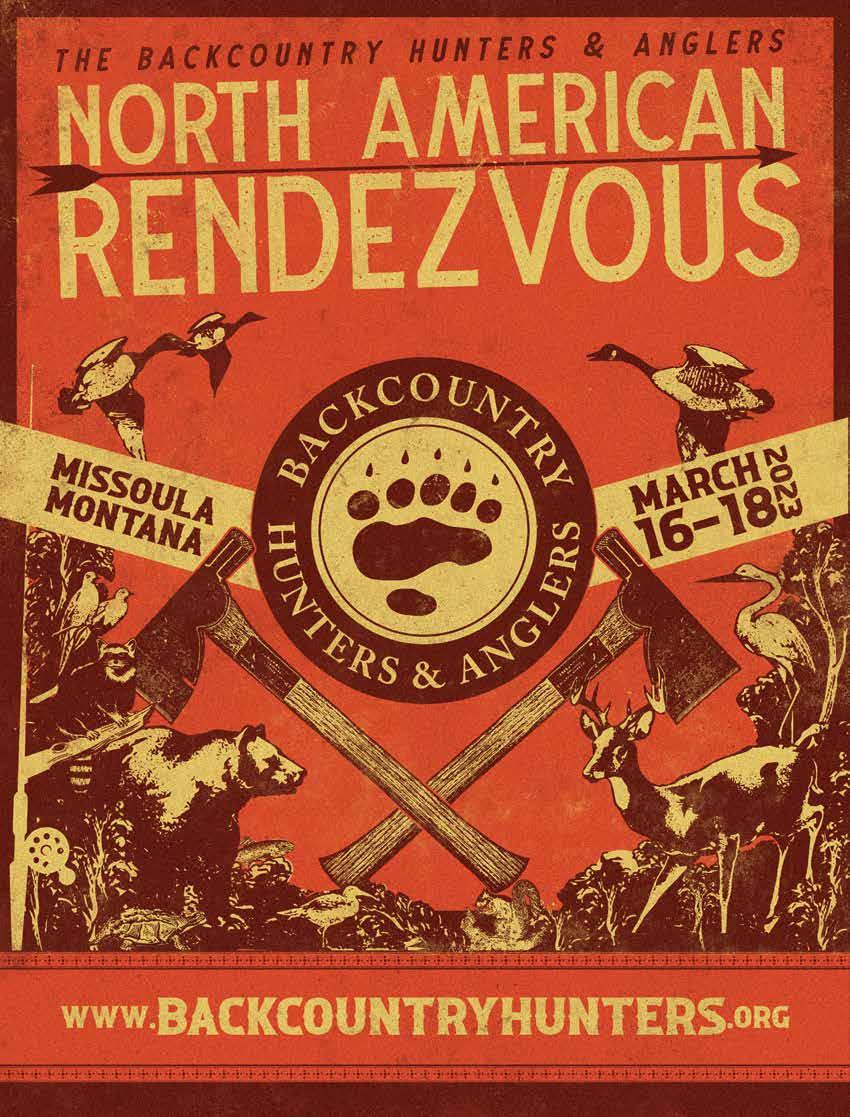
It’s going to be another fantastic gathering of our BHA family from across North America!
This year’s Rendezvous will take place at a new venue, the Missoula County Fairgrounds, in Missoula, Montana, March 16-18, 2023. The fairgrounds’ historic buildings will hold vendors, seminars, panels, live Podcast & Blast recordings with Hal Herring and more. With a move to an indoor-outdoor venue, Rendezvous will be a have an amazing array of opportunities for learning and gathering with old and new friends alike.


Three focused seminar areas, Food, Field Skills and Policy, will feature presentations from chefs, experts in hunting, angling and foraging skills, as well as engaging policy discussions with thought leaders from around the continent.
The Minnesota chapter will seek to defend their repeat title in this year’s Wild Game Cookoff. You won’t want to miss this event; learn, watch and cheer on this year’s competitors as they seek to wrestle the Golden Bull Trophy from the defending champs.
Chefs, members and locavores will convene again for this year’s Field to Table dinner, widely referred to as the best wild game meal anywhere. Attendees will witness chefs from around the country showing their amazing skills with wild game and then feast on their sumptuous creations. This year James Beard Award winner, writer and chef Hank Shaw will be among the chefs preparing this not-to-bemissed repast.
On the final night of Rendezvous 2023 we will wrap with our signature event, Campfire Stories, featuring tales from the inimitable Randy Newberg, veteran and BHA Armed Forces Initiative member DJ Zor, Ray Penny of G&H Decoys and more! Listen, laugh and maybe even cry as these amazing storytellers tell captivating tails of their outdoor adventures.
This is the largest gathering of public land owners in North America. Come and partake in the revelry with new and old friends, and enjoy all that Rendezvous has to offer. Tickets are on sale now at backcountryhunters.org

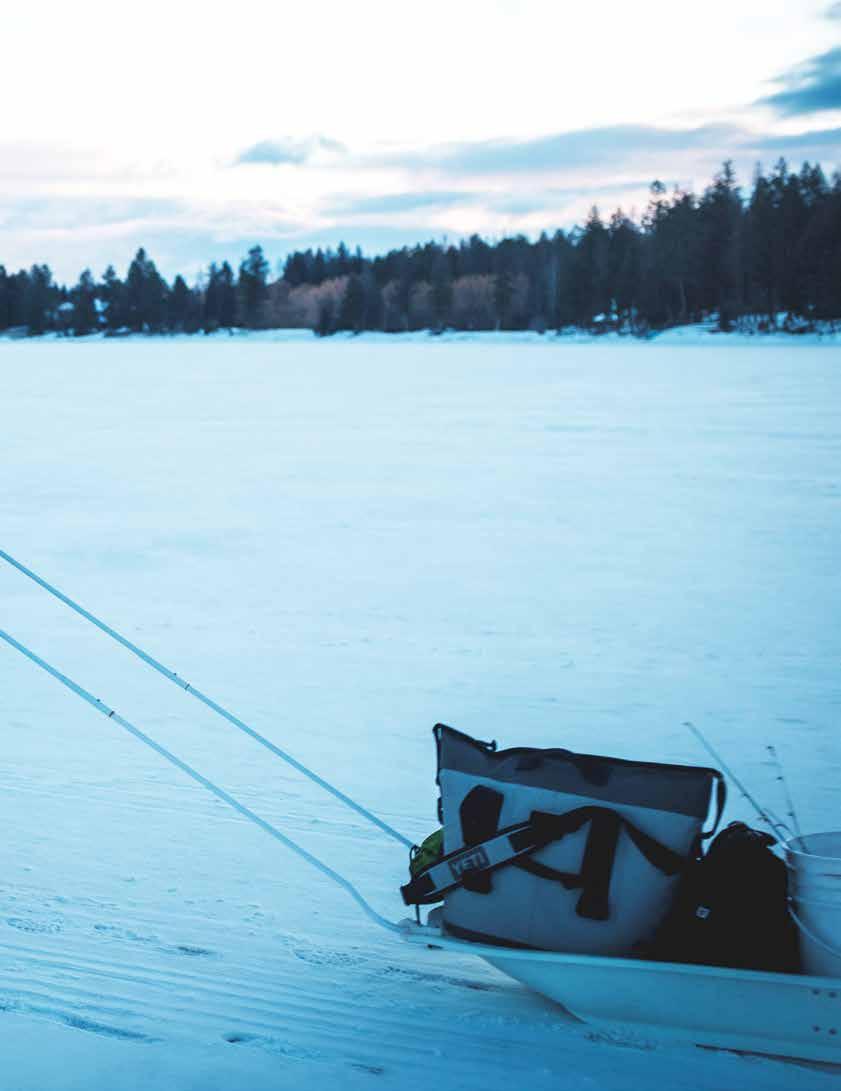
BHA’s 2022 Membership Survey results again depict a membership that trends young, is politically diverse, and is motivated by a set of core values: conservation ethics, tradition and health.
BHA’s survey offers up a profile of today’s public lands hunter and angler: characterized by an affinity for wild foods, a desire to spend as much time as possible on public lands and waters and a commitment to public service.

Highlights from the 2022 BHA Membership Survey follow:
63% of BHA’s membership is 45 or younger; more than a quarter (28%) is between the ages of 25 and 34.
30% of BHA’s members identifies as Independent; 20% Republican, 20% Democrat, 6% Libertarian and 1% Green (21% identifies as none of these or prefers not to respond).
20% of BHA members are active duty military or veterans (the U.S. average is 7%).
54% of BHA’s members forages along with hunting and fishing.

88% of BHA’s members spends at least half of their time recreating on public lands and waters.
More at backcountryhunters.org/bha_s_member_survey_2022_ results
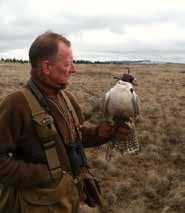
A life member of BHA, Doug Pineo was the embodiment of conservation. From his time at Washington State Game Department and Department of Ecology, Doug fought for the preservation of biodiversity, land conservation and public access to natural resources.
An avid angler and upland bird hunter, Doug also made his mark in the falconry world as a falconer himself as well as a product designer and craftsman. Additionally, Doug served on numerous nonprofit boards, including but not limited to North American Grouse Partnership, Inland Northwest Land Conservancy and as a founding member of the Peregrine Fund.
But what I will remember most about Doug was his infectious energy. His smile abounded every time I saw him, including trolling for walleye, calling for turkeys or when sharing stories and a beer at the BHA Rendezvous. He reveled sharing stories from the pheasant fields or describing the way his falcons worked, and he lit up about his family, their successes and his grandchildren.
Doug was the type of person who would instantly make you feel like a friend and buoyed your desire to fight for what we all hold dear.
Douglas Anderson Pineo passed away September 7, 2022, and is survived by his wife Trisha, his children Helen and Chris and many siblings, grandchildren and other close relatives.
-Josh Mills, BHA development coordinator
Valuable wildlife habitat in central Colorado will be permanently conserved following recent designation of Camp Hale-Continental Divide National Monument by President Joe Biden. Encompassing more than 10,000 acres of critical winter range for elk as well as mule deer habitat, migration corridors and headwaters fisheries, the area also is home to a historic military site, Camp Hale, a World War II-era training ground.
A broad coalition of hunting and fishing groups, including Backcountry Hunters & Anglers, has long advocated for the area’s long-term conservation. BHA staff were present today in Colorado where the president announced the designation and commended the administration’s decision.
“Hunters and anglers in Colorado have been working with local communities for more than a decade to permanently conserve these public lands and waters and important fish and wildlife habitat,” said BHA Conservation Director John Gale, who was on hand for the president’s announcement. “We’re pleased with the administration’s decision to heed the call of millions of citizens and undertake foresighted action in support of these irreplaceable landscapes.
“The Antiquities Act is a crucial tool to conserve large landscapes, secure important fish and wildlife habitat and uphold hunting and angling opportunities,” Gale continued. “Since it was signed into law by President Theodore Roosevelt in 1906, it’s been used by 17 presidents, both Republicans and Democrats, to ensure the long-term conservation of places important to hunters and anglers.”
BHA has consistently advocated for America’s national monuments system and the judicious use of the Antiquities Act as a way to permanently conserve important large landscapes. Key to achieving this outcome is a process that adheres to specific tenets and is locally driven, transparent, incorporates the science-based management of habitat, and upholds existing hunting and fishing opportunities.
In 2016, BHA and a consortium of outdoor groups and businesses released a report on how national monument designations can sustain important fish and wildlife habitat while maintaining traditional hunting and fishing access, which can be read at backcountryhunters.org/national_ monuments_report
An editorial error resulted in the printing of an earlier draft of the story “Mother Wilderness,” in the Fall 2022 print issue. The correct, final version of this story appears in the digital version, which is readable at backcountryhunters.org/ fall_2022_issue_of_backcountry_journal

Ashley Peters grew up in rural Iowa, in a landscape of cornfields and monoculture agriculture. Looking for a wilder and wider life, she found her way to U.S. Forest Service trail jobs in the Minnesota Boundary Waters and in Alaska, to a degree in communications, and to conservation work ranging from the gator-bellowing swamps of Louisiana to the woodcock and grouse popple of the upper Midwest. Hal and Ashley talk the deep engagement and beginners’ mindset of adult-onset hunters and anglers, the challenges of finding one’s way to one’s passions, the swiftlychanging world of conservation, climate and wildlife diversity, and the business of somehow communicating it all clearly to a sometimes skeptical and indifferent public. That and more from the BHA Podcast & Blast wherever you get your podcasts.
Do you know an individual who deserves to be recognized for their outstanding contributions to conservation or our organization? This is your chance to help us honor their work with one of our 2023 awards! Award recipients are announced annually at the North American Rendezvous, set for March 16-18, 2023, in Missoula, Montana! The deadline for nominations is Feb. 3, 2023.
More information can be found and nominations can be made at backcountryhunters.org/2023_bha_awards_nomination_portal
BHA’s Outdoors for All scholarship assists young people with disabilities access to outdoors experiences by providing adaptive equipment or outdoor education. The scholarship, open to anyone ages 10-20, mitigates the expense of outdoor recreation and conservation education and expands experiences and opportunities for people with disabilities.
Applications for 2023 scholarships will be accepted from Oct. 1, 2022-Jan. 30, 2023.
Email submissions to admin@backcountryhunters.org, subject: Aidan Long/Outdoors For All Scholarship applicant.
Applications, written or video, should include the following: name, age, location, activity or gear you would like the scholarship to be applied to, articulation of financial burden, if any (not required), what is motivating the young person to participate in the outdoors, what being outdoors means to them, and how it makes them feel.
BHA’s North American Board of Directors will choose the recipients, and scholarship winners will be notified February 2023.
Great fly fishing, incredible scenery and the chance for an epic fishing story is what got me up early on a Saturday morning in May. That and a crowing rooster that lives on the farmstead next to the campground I was staying at along the Bitterroot River in Missoula, Montana.
I crawled out of my tent and made a pot of coffee on my camp stove, filled my travel mug, grabbed my camera and walked over to the only other human awake at this early hour. Brandon Dale was already dressed in waders and crouched down in the grass next to his tent, inspecting his fly-fishing gear. He looked up at me with an ear-to-ear smile that filled me with the same excitement and energy that surrounds him wherever he goes.
I met Brandon the day before at BHA’s North American Rendezvous, which gives attendees the opportunity to come together in support of public lands and waters. I was there to compete in the Wild Game Cookoff. Brandon was there in his role as a board member for BHA’s New York chapter, while also serving as the New York ambassador at Hunters of Color.
When he told me he intended to get up early the next day and go fly fishing before the day’s events began, I begged him for a chance to join – I’d only witnessed the unique overhead cast of a fly fisher on TV and in the movies.
I’ve always had the sinking feeling I’d be overwhelmed learning the fly-fishing basics. But Brandon is one of those natural mentors who has a zeal for both his work and outdoor passions – and it can inspire and motivate the rest of us to pursue our dreams.
I sipped on my mug of coffee as I followed Brandon to a spot he picked out on the banks of this south-to-north flowing river, lying under the watchful eye of Blue Mountain in Big Sky Country. In less than a minute, we witnessed our first “riser” – a trout rising to the surface. Then another, and another. These swirls, splashes and
winks in the water were often followed by a dorsal fin and a flick of a tail. My heart pounded harder in my chest every time one showed itself. It was the same excitement I get when I see the side-to-side swishing tail of a whitetail.
I watched Brandon fish with an easeful intention. His casts started with the rod tip low to the water, then paused on the backcast with the rod tip high. Finally, he finished with the rod tip low to the water again. The downward trajectory of how he casts is the opposite of how he lives his life.
Brandon is a medical student in New York City, but he grew up in Lafayette, Louisiana. Inspired by his mom’s work ethic while growing up poor in the South, he’s proud to say he’s the first in his family to attend college. His unyielding drive and determination have him studying for a Ph.D. in biomedical sciences and pharmacology – he wants to discover new cancer drugs. His goal is to be a physician researcher specializing in breast cancer.
I watched Brandon cast again, sending a delicate presentation of an artificial insect drifting along the surface of the river. Suddenly he set the hook. “Fish on?” I asked excitedly. “Is it a fish?”
“Just a log,” Brandon explained as the line broke off, dashing my dreams of a netted and photographed trophy trout.
He spent the next few minutes sitting across from me on the riverbank, tying on a new fly, picked out from his box of over 200 different sizes and patterns. Using his right thumb and forefinger, he slowly and carefully threaded the line through the tiny eye on the lure.

I believe you can tell a lot about a person by what kind of fishing knot they tie. Brandon chose a Trilene knot – strong and reliable. As he did so, he shared that, after years of study and passing his medical boards, his own mother, Emily, had been diagnosed with breast cancer just a few weeks ago.
My mouth felt dry in that moment as I considered how I would react if my own mother had such a diagnosis. But Brandon didn’t
skip a beat. He stood up tall, clutched his fly rod and stepped back toward the water. His eyes scanned the surface for another riser as he explained to me how they had found her cancer early and had successfully removed the tumor. He was optimistic his mother would have a full recovery. How I yearned for his type of confidence and trust about fishing – and life!
Brandon Dale is a fisherman who possesses the attributes of talent, knowledge and patience, which allow him to read a trout stream’s runs, pools, eddies and undercuts for the answers the rest of us seek but can’t seem to grasp. It’s his modest but determined character that helps him be successful in the outdoors. And it’s his commitment to conservation and mentoring underrepresented hunters and anglers that speaks loudly of his love of nature and his fellow man.
Just as he doesn’t lament over his mother’s breast cancer diagnosis, he also doesn’t sit with regret over the barriers of entry for new hunters and anglers. He volunteers his time and dedicates himself to teach others. Whether he’s wearing a lab coat or a pair of waders, Brandon Dale is on a mission to make things better.
BHA member Jeff Benda is a wild game chef, butcher, photographer, and outdoor writer (wildgameandfish.com). He lives with his wife and daughter in Fargo, North Dakota.
BRANDON, YOU ARE PASSIONATE ABOUT HELPING RECONNECT PEOPLE TO THEIR HERITAGE AND GROWING HUNTING AND ANGLING IN UNDERREPRESENTED COMMUNITIES. HOW ARE YOU WORKING TO ACCOMPLISH THAT? AND HOW CAN BHA MEMBERS AND THE ORGANIZATION PLAY A ROLE?

I’m the New York ambassador for Hunters of Color, and I’m a board member for the New York chapter of BHA. Through both roles, I coordinate year-round mentored hunting and outdoor skills education programs to increase the access and accessibility for new hunters and fishermen from underrepresented communities. Whether it’s a night on the indoor archery range, 3D outdoor archery courses, fly fishing outings, sausage-making demonstrations or online scouting and gear talk sessions, my goal is to holistically prepare mentees for all aspects of hunting and angling. These sessions culminate in two mentored deer bowhunting weekends, where the mentees are paired with mentors and hunt while building community to continue their journeys throughout the season.
Being based out of New York City, there are unique challenges to hunting and fishing that the mentees understand firsthand. However, I really enjoy being able to build community around hunting and angling for people who may have never left the concrete jungle. In many ways, once someone learns how to navigate hunting and fishing out of NYC, they are prepared to do it anywhere.
Most importantly, it is incredibly rewarding to foster the next wave of hunters, anglers, conservationists and, ultimately,
public land advocates, who will carry the flame to their communities while also making the outdoors more inclusive and accessible for everyone. Collaboration is key to the success of these programs, and I work closely with The Nature Conservancy in New York and BHA’s New York chapter.
The best way BHA members can get involved is to become a mentor or volunteer who spreads the word. Much of the cultural and technical know-how of hunting, fishing and outdoor recreation is familial. For folks who didn’t grow up with these mentors and experiences, the best thing we can do is to step up, teach others and pay it forward. We’ve got Hunters of Color (HOC) communities across the U.S., so reach out to your local ambassador and get connected to become a mentor. BHA, as an organization, should continue to be a key partner for HOC, and continue to help new hunters find community and mentorship.
I’m a BHA member because I fundamentally and unequivocally believe that we all have the right to recreate on and enjoy public lands. Being able to work with an organization that is dedicated to protecting that right is something that just makes sense. The folks in BHA are another huge reason of why I’m a member. The BHA community feels like family. We’re all united by a passion for hunting, fishing and conservation of our public lands, and I’m proud to be a part of this organization.
Connect with Brandon Dale: Instagram @bdale13 and @huntersofcolor Email: brandon@huntersofcolor.org huntersofcolor.org
“To have places we can access with the least amount of barriers. … It is the most democratic platform you can imagine. Everybody is welcome. … It is my job, and it is urgent for me to be the voice for these places.”
-Rue Mapp, Founder and CEO Outdoor Afro Vallejo, California

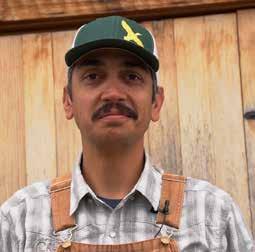

“I was introduced to BHA through the collegiate program. … I didn’t even know that public lands were a thing.”

-Madeline Damon, BHA U. of Montana collegiate club Missoula, Montana

“BHA is focused on a few things in conservation that no one else is focused on; specifically, the issue of access of public lands.”
-Ray Penny, owner G&H Decoys, veteran Tulsa, Oklahoma
“This is the most youthful organization, and it is a big tent – everyone is allowed to participate … that is generational (conservation) leadership.”

“This is the group that gives voice. It amplifies voice and action. We have found a way to leverage our relationship… I’ve never been involved in an organization that has this kind of ground up punching power.”

-Eddie Nickens, journalist, BHA North American board member, Raleigh, North Carolina

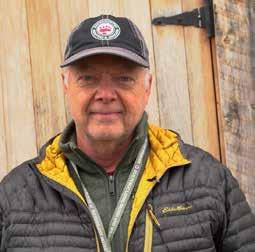
-Col. Mike Abell, BHA Kentucky chapter board Louisville, Kentucky



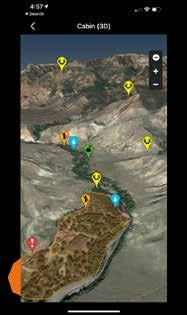

Species:





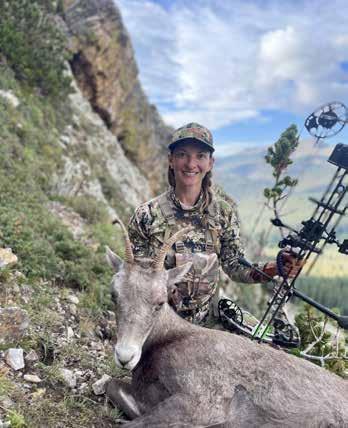
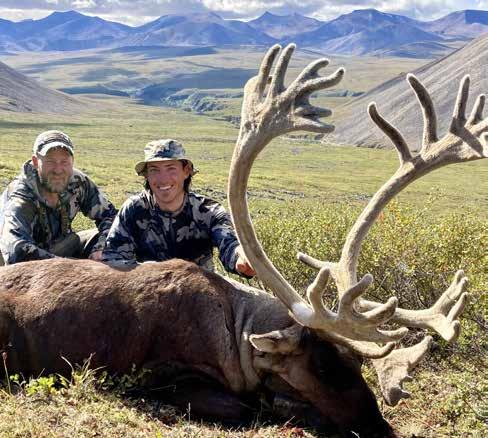







This is our workhorse, the ideal do-it-all option for most hunters. With each design decision, we sought the perfect balance: a shell that provides rugged protection without sacrificing flexibility; a true stealth fleece that’s still lightweight and breathable; all the technical details you want without the extras you don’t. Available as a jacket, vest, hoodie, and pants.




DuPage River, Illinois. Photo: istock.com/ EJ_Rodriquez
Conservation’s godfather, Theodore Roosevelt, once stated, “It is a good thing for us, by speech, to pay homage to the memory of Abraham Lincoln, but it is an infinitely better thing for us in our lives to pay homage to his memory in the only way in which that homage can be effectively paid, by seeing to it that this republic’s life, social and political, civic and industrial, is shaped now in accordance with the ideals which Lincoln preached.”
Roosevelt paid homage to Lincoln’s memory by protecting 150 million acres of accessible lands and waters for all people to enjoy, across the nation.
However, Lincoln’s home state, Illinois, currently has an accessibility problem in regard to its public waters.
Eight-hundred and eighty miles of the Illinois border is created by water flowing down the Mississippi, Wabash and Ohio rivers. In Illinois proper, there are 87,000 miles of waterways. But the Illinois Supreme Court confirmed in June 2022 that large areas of flowing water in Illinois are privately held by the landowners owning water frontage.
The court supported landowners along private waterways down to the middle of the waterway, including the water itself. The flowing water belongs to the landowner, the court found, and anyone floating along is trespassing.

This limitation stems from outdated laws and definitions. Federal law recognizes all waterways as public as long as they are considered “navigable,” floatable for means of commerce at any time in U.S. history. “Navigable” is a term open to interpretation and by Illinois state law is given a slightly different definition that does not align with federal law. Not all federally navigable waters in Illinois are open to the public due to Illinois law.
In the early 1900s, the DuPage River floated a wheel boat for public transportation, a clear representation of commerce and navigability, but by Illinois law, this river remains private. This is because the state of Illinois law designates public water, ignoring federal access laws. The water turns muddier, however, as the
a tube and float the DuPage, as long as you are content to risk the possibility of trespassing.
While I certainly respect property lines, borders drawn across moving water seem quite different from the ol’ fence row and give rise to a whole host of questions.
Is your water trespassing on your neighbor’s water? Who’s caring for the water? Who even knows?
As Roosevelt showed, if a resource is owned by everyone, it will indeed be left for generations to come.
Water, a building block of life, a resource so plentiful, so important, is inaccessible to most of us in Illinois – inaccessible to the angler looking to escape to the local stream or the family looking to float and connect outdoors. By contrast, accessible waterways create the opportunity for others to recognize the importance of natural resources, and in turn, they recognize the value of public lands and waters, not just for weekend adventures but for the future prosperity of all Illinoisans.
BHA’s Illinois chapter has been engaged with other organizations across Illinois to work on legislation changes that will align Illinois water access law with federal access laws, expanding water access opportunities for all. It is time to pay homage to Lincoln and Roosevelt and secure water access for all to enjoy for generations to come – or we will continue to float along in muddy waters.
Drew Kazenski resides in rural Central Illinois and serves as cochair of the Illinois BHA chapter. With a great passion for hunting, fishing, conservation and the future of it all, he believes we all take something from the land; therefore we should all give something back.
A version of this story also appeared in the Chicago Tribune on Sept. 6, 2022. Speak up for public water access in Illinois at backcountryhunters.org/take_action#/takeaction
Years ago, I was lucky enough to draw a bull elk tag in Utah’s Book Cliffs, where I enjoyed a tremendous hunt in the remote and rugged region. I harvested a mature bull with my father at my side and was hooked.

Since that hunt, I’ve explored canyon after canyon of the country on foot. Sometimes I’m hunting bison, elk or turkey – but often I’m trying to better understand the topography, hydrology and archaeology of this wondrous country.
In 1988, Utah’s Grand County Commission created a Special Service Road District whose sole purpose was to construct an 83-mile paved highway, named the Book Cliffs Highway, through the East Tavaputs Plateau, which is a remote region of southeastern Utah filled with archeological wonders and abundant big game, for the extraction of gas, oil and minerals.
In response, citizens from Grand County changed the three-person commission into a seven-member council and, in 1993, dissolved the board’s administrative authority to continue pursuit of the highway. The mineral lease funds allocated to the highway were redirected to recreation, hospitals and solid waste special service districts.
That was just the beginning.
In 2013, the Book Cliffs Highway reemerged under former Rep. Rob Bishop’s (R-Utah) public lands bill as a public utility corridor. And in 2014, the Grand County Council joined the Seven County Infrastructure Coalition (SCIC) – consisting of Utah’s Carbon, Daggett, Duchesne, Uintah, San Juan, Emery and Sevier counties – in a move to begin moving taxpayer dollars into the building of the illfated highway.
But then in January of 2015, after a new election, the newly appointed Grand County Council rescinded the previous council’s resolution to join SCIC over concerns for the proposed highway. Since this time, Grand County, no longer a member of the SCIC , has opposed the building of the highway.
Opposition to the highway, specifically in Grand County, lies on various foundations. Once proposed as a “fossil fuels” highway, and opposed as such, it is now being touted as a tourism corridor to move individuals from Yellowstone to the Mighty Five national parks in southern Utah. The alignment would save tourists approximately 15 to 25 minutes over taking existing routes and would leave those rural communities with a lack of revenue generated by the tourism industry.
The project has also been opposed by many – including Grand County, local NGOs and municipalities such as Helper and Dinosaur – due to the tremendous financial burden it would place on taxpayers.
It would cost approximately $6.6 million per mile (for about 35 miles) for construction of the highway, along with a yearly maintenance of approximately $1.35 million.
To note, these estimates are now years old and do not account for the escalating costs of building materials and fuels since the pandemic.
The most poignant impact to backcountry hunters and anglers is the irreversible destruction this route would cause to fish and wildlife habitat in the area.
The Utah Division of Wildlife Resources currently has a working group addressing the many issues faced by wildlife in this region. Extended drought leading to forage degradation, loss of perennial water sources, forage competition with livestock and feral horses, and elevated heat have led to either stagnant or declining elk, deer, pronghorn and bighorn sheep populations, not to mention upland game. The highway will add another burden for wildlife to shoulder, leading to direct vehicular loss, habitat fragmentation, invasive weed introduction and stressors to wildlife breeding and reproduction.
That’s why the Utah chapter of BHA has advocated against this highway by spearheading media campaigns both locally and nationally seeking to promote membership activism at a state legislative and local political level. BHA has also promoted the opposition of the highway at the Western Hunting and Conservation Expo, educating sportsmen and women on the effects of the highway on big game.
In March of 2022, the SCIC voted four-three to no longer pursue the highway, stating that they would rather invest in other large infrastructure projects such as the Uintah Basin Railway, which would run through pristine habitat in the central mountains of Utah. At this time, the executive director of SCIC, and the biggest proponent of the highway, has also resigned from his position.
The future of the Book Cliffs Highway is unknown. However, citizens of Utah and BHA members, those who find value in wildlife and wild places, should be ever vigilant of its potential return and be ready to hold strong in this almost 35-year-old battle.
Trisha Hedin is the director of an adult education program and a county commissioner in Moab, Grand County, Utah. Hedin also sits on working groups with the Utah Division of Wildlife Resources, representing both elected officials and sportsmen and women. She’s an avid rock climber and hunter, specifically enjoying hunting elk and turkeys. Trisha represents Utah’s southeastern region on the board for BHA’s Utah chapter.

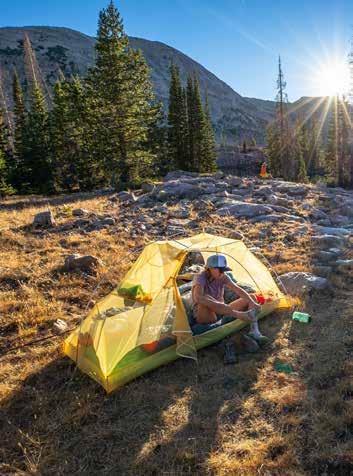

• In October, the chapter partnered with TRCP and guest John Gaede ke (Iniakuk Lake Wilderness Lodge) for a presentation about Brooks Range, its hunting and fishing qualities, and information about the Ambler Road EIS comment period.
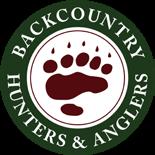
• In September, the chapter partnered with the Midnight Sun Fly Cast ers to clean litter on the Chena Hot Springs Road.
• In August, approximately 70 people volunteered for the annual inva sive crawfish removal event in Kodiak, which removed over 1000 craw fish from critical juvenile salmon habitat.
• The chapter continues to publicize the proposed industrial road through the West Susitna Valley; as more Alaskans learn the specifics of the plan, enthusiasm for the project is waning.

• The Alberta chapter held an Armed Forces Initiative elk hunt at the Waldron Ranch to highlight cooperative conservation and steward ship practices on public and private land.
• Signed on as a partner on a “Shadow Coal Policy” to emphasize the
need for firmer legal protections for the Eastern Slopes.
• Sent a letter to the AEP Minister calling for restoration and reclama tion of public lands damaged during coal exploration since 2020.
• Partnered with the Ghost Watershed Alliance for an August cleanup in the Ghost PLUZ.
• The chapter held an annual family squirrel camp near Flagstaff in con junction with the Arizona Wildlife Federation and Arizona Fish and Game Department.
• Held the 3rd annual World Championship Dove Cook Off in Yuma, Arizona.
• Led a very successful mushroom hunt near Flagstaff.
• The chapter partnered with Ozark Beer Co. to release a limited-run of our very own beer: Bear State Golden Lager. A portion of the proceeds from this beer will directly benefit our fight for public lands, waters and wildlife here in Arkansas!
• In partnership with the Arkansas Game & Fish Commission and onX, we helped provide the agency data necessary to identify landlocked parcels of land throughout the state. The chapter board will be engaged in ongoing work to address access opportunities in Arkansas.
• AFI was approved as a Skillbridge partner for separating active duty mil itary members. We will have one active duty member working within AFI to increase members skills and lend assistance as they move toward separation.
• Kirtland AFB hosted a very successful antelope camp in New Mexico.
• AFI hosted 18 veterans on a wilderness canoe trip into the Boundary Wa ters Canoe Area Wilderness, which highlighted the need for permanent protections for the BWCA.
• Washington AFI hosted Grouse and Garbage, where 20 participants cleaned the Stoner Pit Shooting Range in the Elbe Hills. They success fully filled a 15 feet by 18 feet trailer with all the trash!
• A Colorado bear and elk camp was held in November for Colorado Armed Forces Initiative leaders.
• AFI established a new installation chapter at Seymour Johnson Air Force Base in Goldsboro, North Carolina.
• The chapter participated in the Together for Wildlife Workshop to further progress of regional wildlife advisory committees, Wildlife Act review and Indigenous knowledge and shared decision-making policies.
• The chapter is involved in Provincial Hunting Trapping Advisory Team sub committees regarding the thinhorn sheep management plan and the Limit ed Entry Hunting system review.
• Members have been active and volunteering across the province with inva sive plant pulls, trail days, the WildCam project, an alpine lakes survey and holding pint nights with educational speaker presentations.
• Public Lands Month kicked off with a pint night and pack out on the Kern River, followed by a coho salmon restoration planting project with BLM in Point Arena, as well as a CSUF collegiate club Trabuco Creek cleanup.
• BHA also teamed up with the United States Marine Corps again to replace two guzzlers in Anza Borrego using helicopters and a volunteer ground team. Many groups came together to make this happen, but a special thanks goes out to the Marines (HMLAT 303), Scott Gibson, WSF, SCBS, ABDSP, ABF and the Sycuan Band of the Kumeyaay Na tion for purchasing the tanks.
• The Capital chapter hosted three WMA cleanups in September in sup port of Public Land Month. We were able to clear trails, cut shooting lanes for disabled hunting blinds and collect several dozen bags of trash.
• The chapter is running a mentored hunt program this fall and winter, where we will work with 10 new hunters. This will be a several day men tored educational event followed by a Virginia shotgun deer hunt.
• The chapter recently expanded its board to help further expand our re gion of engagement, and we are working on revamping the field represen tative volunteer team.
• The collegiate program awarded our third year of the Public Land Owner Stewardship Fund, which supports on the ground stewardship projects, to the University of Minnesota, Washington State University, University of Wisconsin Stevens Point and Murray State University
• Clubs showed up for Public Lands Month by packing out trash from their public lands. Washington State University picked up trash along the Snake River before hitting it for some fishing, and our emerging club at California State University Fullerton packed out trash from the Northwest Open Space.
• We hosted our final three learn to hunt workshops at Murray State (squirrels), University of Montana (waterfowl) and Northern Arizona University (rabbits and quail).
• The Colorado chapter published “Tag Allocation Observations” and a “Memo on Illegal Trails” on the BHA website.
• The chapter submitted comments for the BLM’s Colorado Big Game Resource Management Plan Amendment.
• The Seek Outside Podcast sat down with chapter co-chair Don Holm strom (Ep. 99) and chapter coordinator Brien Webster (Ep. 104).
• New chapter leaders include Nicholas Alfieri and David Brown as Cen tral Mountains Group assistant regional directors.
• Our 14th annual rendezvous will be held June 9-11, 2023, at the Soap Creek Corral/Coal Mesa Horse Camp west of Gunnison.
• The Georgia chapter submitted a petition to the governor, signed by thousands of Georgians, to urge the state to buy Pine Log WMA – a vital piece of public land that is currently for sale.
• The chapter has multiple events planned or in the planning stages for 2023.
• The chapter continues to build on the success of our Learn to Hunt pro gram, with mentors being assigned to all participants for what should be a great season.
• Idaho BHA is helping to build an information sharing coalition with other conservation organizations to better position our priorities for the next legislative session.
• The chapter donated $1,000 to Lake Shelbyville Fish Habitat Alliance for continued habitat improvements. Look out for more fish stocking, habitat builds and cleanups soon.
• The chapter is in the early stages of building the first BHA public 3-D archery trail in central Illinois. To become a sponsor of this project, reach out to Illinois@backcountryhunters.org
• Over 95% of Illinois waterways are not accessible to the public. The chapter continues to stay engaged in expanding stream access in Illinois. Please reach out to the chapter to organize events on water near you and continue to contact your legislators and ask them to be engaged in ex panding access. See the article on page 25 for more information.
• The Indiana chapter came together for their second annual chapter ren dezvous at Glendale FWA. The event was a great success, with events consisting of mourning dove and squirrel hunts, a public land pack out, special guest DNR presenters, an archery shoot, wild game cook-off and general conversation about where we are headed as a chapter.
• With funding supported by a grant from Bendix, the Indiana chapter was able to fund and assist Indiana DNR with the re-decking of the boardwalk at Pisgah Marsh Area.
• The chapter hosted its third annual state rendezvous in August at Saylor ville Lake near Des Moines.
• Partnered with two county conservation boards and others to contrib ute to the purchase of multiple tracts for public access in Ida and Lyon counties.
• Attended the Iowa Conservation Alliance annual meeting to lend Iowa BHA’s voice to legislative priorities for the upcoming 2023 legislative session.
• The Kansas chapter partnered with Friends of the KAW to do two sepa rate river cleanups in Manhattan and Desoto, along the Kansas River, in October.
• Trivia pint nights were held in Lawrence and another in Bonner Springs, which partnered with wildHERness at Outfield Beer Company.
• BHA helped with a cleanup project to remediate an illegal marijuana farm at Perry Lake near Topeka in September.
• In August the chapter accomplished a lot: held our annual summer at Pea body WMA by filling a dumpster with trash; held a Hack & Spray Day for invasive species on Higginson-Henry WMA; as part of a four-way partnership with Hunters of Color, Anderson County Sportsman’s Club and Kentucky Department of Fish & Wildlife, held a shotgun skills and pre-dove warmup.
• In September, the chapter did its part with Public Lands Month: a trash cleanup in Central Kentucky with Bluegrass Trout Unlimited at Hickman Creek, and to celebrate Public Lands Day, we went down to Eastern Ken tucky to Buckhorn Lake WMA and did a trash cleanup.
• After a two-year hiatus, we held our Michigan chapter rendezvous in Au gust – an amazing time with some incredible raffle prizes given away.
• Our policy group is closely following a proposed expansion of a military base, which could affect public access.
• Pint nights are in the works!
• The chapter will host the first annual North Country Icebreaker, Jan. 2729 at McQuoids Resort, on Mille Lacs Lake near Isle, Minnesota. This regional get-together will feature ice fishing, dark-house spearing, winter camping, wild game cooking and more!
• The Minnesota chapter partnered with the Minnesota DNR to host events in Eden Prairie and Grand Rapids that demonstrated lymph node extraction and discussed issues surrounding chronic wasting disease.
• The Minnesota chapter welcomes Keng Yang to the chapter board.
• The Missouri chapter, in celebration of Public Lands Month, donated $1,500 to the River Access Coalition legal fund, who we have partnered with to regain river access at Lindenlure on the Finley River.
• The chapter has also donated $1,500 to the Wyoming Corner Crossing Fund and $500 to the Bully pulpit fund. With matching donations, the three donations total over $6,500 in funds.
• The chapter organized a public land cleanup at Cooley Lake, outside of Kansas City.
• The chapter gained permission to intervene against a lawsuit that threatens Montana’s elk hunting heritage. Learn more at KeepElkPublic.org.
• Met with Senator Tester, Interior Secretary Haaland and USFWS Direc tor Williams to support and celebrate conservation efforts in Northwest Montana.
• The chapter testified before the Land Board, Fish & Wildlife Commision and the Private Lands/Public Wildlife Council to support public access, land acquisitions and equitable, fair-chase hunting opportunities.
• Sprayed invasive weeds, restored streambeds, maintained trails and cleaned up the Madison River and hosted events in Helena, Missoula, Butte, Kalispell, Lewistown, Billings and Bozeman.
• Nebraska chapter members attended the Nebraska Bowhunters Jamboree, sharing what BHA is all about with attendees.
• The Nebraska chapter board is meeting regularly to schedule events around the state.
• The chapter held an upland season kickoff pint night and raffled off an over-under shotgun, which was donated by chapter sponsor Imbib Cus tom Brews.
• The chapter is working toward the goal of selecting regional chapter leader representatives to better represent the membership in our huge state.
• The policy committee is very active in wild horse and burro management and is paying close attention to extraction and power projects in the state.
• During late October, the Vermont Armed Forces Initiative team held a turkey hunting camp at Wild Roots Farm in Bristol, with hunting in the Green Mountain National Forest.
• In Rhode Island, we partnered with the Department of Environmental Management fish and wildlife division to support a waterfowl workshop and mentored hunt during the state’s youth waterfowl season.
• Vermont BHA members are planning a wintertime apple tree release in several locations on public land; reach out if you’re interested in lending a hand.
• The New Jersey chapter, in partnership with NWTF, hosted a mentored archery deer hunt for six adults in cooperation with Wallkill River Na tional Wildlife Refuge in October. The hunters attended a safety and deer hunting workshop and hunted a full day with their mentor. The Newton High School Future Farmers of America invited the hunters to the school, and the students walked them through how to butcher and process a deer from start to finish.
• A passionate BHA member successfully stopped an unnecessary road clo sure in Grant County, which would have impacted 5,000 acres of BLM and state land access in mule deer country.
• In light of the New Mexico Supreme Court’s recent opinion re-affirming the public right to recreate in public waters, the chapter secured grant funding to execute stream access stewardship projects and educational events this fall.
• The chapter worked with NMWF to release a report outlining the extent of elk tag privatization in New Mexico based on the most recent data.
• The chapter teamed up with New York Hunters of Color and the Nature Conservancy of New York for an outdoor 3D archery and wilderness skills day. This event was prep for the mentored bowhunt coming up in No vember!
• The chapter partnered with the New york DEC at the Utica Marsh WMA, helping to refinish the observation tower overlooking the marsh.
• The chapter is helping new hunters up their game. Check out our new Instagram reels (@newyorkbha) on building arrows and packing for a backcountry big game trip out west.
• The Sundheim Boatramp renovation was completed in September. North Dakota Game and Fish matched chapter dollars to make this boat ramp operational again.
• Hosted our first Beer, Bands and Public Lands event in Fargo in late Au gust. We hope to grow this event into a major fund raiser going forward.
• Our 3rd non-motorized signage project was conducted in August. Volun teers replaced dozens of faded/defaced non-motorized signs in the Little Missouri National Grasslands.
• This year’s Badlands Classic, a 3D archery shoot that takes place entirely on the Little Missouri National Grasslands (aka The Badlands), was our 4th year partnering with the Roughrider Archers. We continue to work towards growing this event.
• The Ohio chapter had a very busy Public Lands Month, with a total of five recent events, including a “learn to fly fish” session, led by local leg end Jerry Darkes and the always fun Ohio Women On The Fly; a catfish jugging event on the scenic Little Miami River; and a cleanup at Alum Creek State Park. With various promotions at events, we were able to sign up nearly 80 new members and were honored as BHA’s September Chapter of the Month.
• The chapter supported the acquisition and rehabilitation of land along a mile-long section of one of Ohio’s beloved steelhead tributaries, the Chagrin. The chapter has previously pledged $5,000 to the effort and more recently submitted a letter of support for the Chagrin River Floodplain and Land Conservation Project.
• The chapter held its first “Cut and Cook” butchering and cooking class this fall. Alongside chapter sponsors and volunteers, the class broke down field dressing techniques and showed easy ways to prepare wild game once back home.
• Chapter leaders and volunteers helped to restore sagebrush and bitter brush habitat in Eastern Oregon, alongside Oregon Hunters Associa tion. Sagebrush and bitterbrush habitat is crucial to thriving mule deer populations, which have dwindled in Eastern Oregon and continue to decline.
• Several cleanups were held across the state, including one in which 40 contractor bags of trash and two sofas were removed from state game lands.
• The first annual Bustin’ Clays with BHA was successfully held in Carl isle. The event served as a fundraiser to support policy work in the state.
• The chapter engaged as the sole organization in a pilot “Adopt a Boat Access” program with the Pennsylvania Fish and Boat Commission.
• Sunday hunting on public land remains the top priority for our chapter. We continue to communicate with policy makers and build relation ships with other local leaders to support the movement.
• The chapter launched a call to action based on a change made by the SCDNR to national forest land regulations in South Carolina, which reduced overall access by 67% for walk-in waterfowl hunting. Our chap ter leadership led members in messaging the SCDNR and lawmakers in opposition.
• From Dec. 1-4, the chapter held a campout hunt at the ever-threatened Yanahli WMA. The group camped at Henry Horton State Park and hunted at Yanahli, and a great time was had by all.
• This fall, the chapter held a cleanup at Percy Priest WMA. This WMA is near cities and subdivisions, and trash is dumped there regularly. We made a big difference and made important connections with the TWRA officer in charge of the WMA.
• The chapter continues to hold monthly pint nights in Nashville. At tendance is growing, and there is a lot of excitement for the mission of BHA in Tennessee.
• The chapter was awarded a grant by Gulf of Mexico Alliance to go to ward smooth cordgrass planting for shoreline resiliency and to prevent erosion of coastal marsh habitat at the Texas Mid-Coast Refuge Com plex
• The chapter launched the “Adopt a Public Dove Field” program, recruit ing hunters to be stewards of properties enrolled in Voluntary Public Access.
• The chapter continues to support Save the Cutoff, working to maintain public access on this stretch of the Trinity River.
• We wrapped up our inaugural five-week Hunting for Sustainability workshop with a hands-on field dressing and processing workshop. A dozen graduates are afield this fall, and we hope to hear successful stories soon. Thank you to Utah DWR for the support.
• This summer, the chapter heavily contributed to the statewide elk man agement plan, which will be in place for the next eight years.
• Utah chapter board member William Peterson helped a special needs youth hunter gear up for his once in a lifetime moose adventure in the fall. Will coordinated a guide and gear donation from Cabela’s. The hunt was a success and an unforgettable experience for this young pub lic land owner!
• The chapter has joined the Washington Sportsmen Coalition with several other hunting and angling organizations across the state. This effort was bred from the fight for and ultimate loss of Washington’s spring bear season earlier this year.
• The chapter was awarded the Washington Department of Fish and Wildlife Region 2 Organization of the Year. This comes after long efforts to restore hunting opportunities in Washington State.
• The chapter will have a booth and raffle at the West Virginia Hunting & Fishing Show in Charleston.
• Stay tuned to our e-newsletter and social channels for 2023 chapter events.
• The chapter will be tracking the 2023 West Virginia legislative session and will keep you posted on relevant bills via email and our social chan nels.
• The chapter successfully completed its annual learn to bow hunt pro gram in September. The program consists of participants learning the basics of archery, along with lessons around deer hunting, over the span of seven weeks, before a weekend mentored hunt.
• The chapter is funding a carcass dumpster at its adopted wildlife area, Goose Lake, to help fight stop the spread of CWD. The chapter is also donating $1,000 to Bayfield County to help fund carcass dumpsters.
• The chapter engaged in a Wisconsin Conservation Policy Summit to collaborate with other hunting and fishing organizations to advocate for pro-hunting and angling policies in Wisconsin.
• The chapter would like to thank MeatEater for its continued support on the Wyoming corner crossing issue. From sharing posts to encouraging donations and to donating $15,000 directly to the BHA campaign to cover the hunters’ legal fees – MeatEater’s support has been instrumen tal in our efforts during the last year. Thank you!
• Thank you to Jon Lang, owner of Mountain Top Motors, for his gen erous match donation of $5,000 to BHA’s September corner crossing campaign. Thanks to Jon and our amazing members, we raised $23,645 during the month of September, exceeding our fundraising goals, and raised over $111,000 total, ensuring the Missouri hunters will have the funds they need to cover remaining criminal defense fees and current civil defense fees.
• The chapter has contracted with a lobbyist and will be actively engaged during the 2023 legislative session to defend and expand public access opportunities.
Find a more detailed writeup of your chapter’s news along with events and updates by regularly visiting www.backcountryhunters.org/chapters or contacting them at [your state/province/territory/region]@backcountry hunters.org (e.g. newengland@backcountryhunters.org)
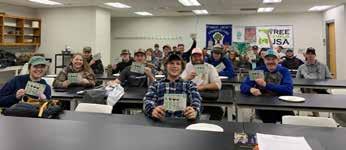

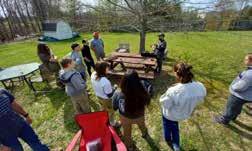







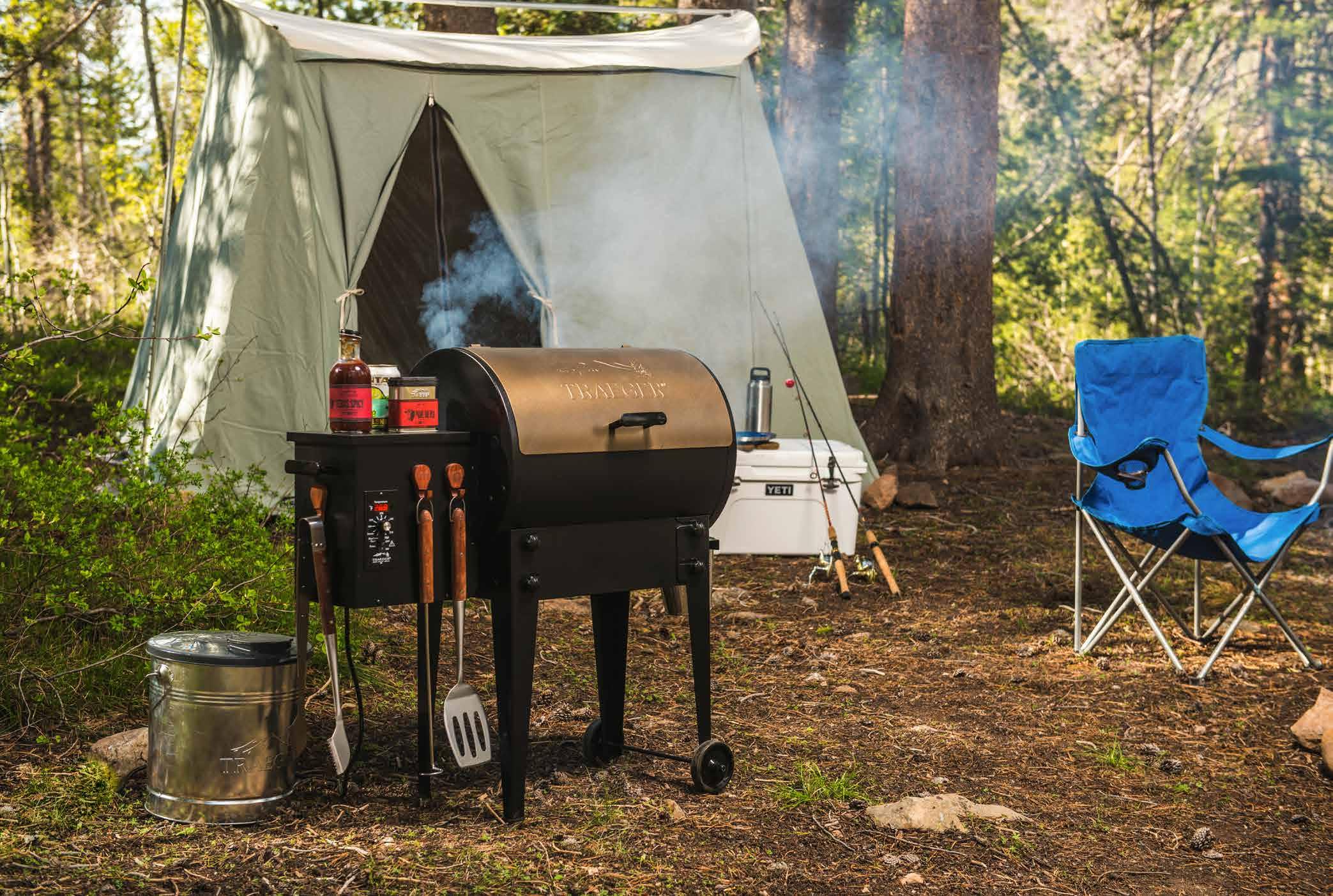



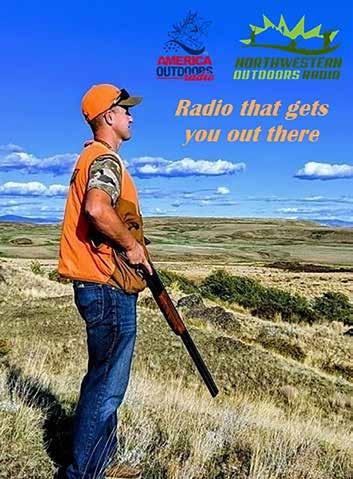



An overnight snowfall left an inch of fresh powder in the woods –perfect for tracking ruffed grouse on this wintry morning.
I came across a group of tracks that tiptoed their way up a draw and followed them while keeping an eye out ahead of me. Soon enough, I approached a stand of young hemlocks and heard the trill of a ruffed grouse. One flushed to the left. I quickly fired but missed. A second burst out of the thicket but never presented a shot. Finally, a third grouse launched out, and I swung the shotgun and connected.
Pursuing grouse in the late season is a rewarding experience for any hunter who enjoys being in the winter woods with a shotgun in hand. Grouse can be an elusive species no matter the time of year, but once snow starts falling, it can provide the hunter a unique opportunity to track and locate these clandestine birds.
When it comes to the late season, grouse gravitate toward habitat that meets their food and shelter requirements in a relatively small area.
Ruffed grouse have limited body fat, so they need food that is readily available all winter long.
For both western and eastern states, mature male aspen trees are a significant winter food source – and grouse fly up to the branches to eat the tree buds. If there is a lack of nearby mature aspen stands, you may be able to find grouse feeding in birch or younger aspens.
In western states, snowberries are another late season food source, while in eastern states, hazel brush is more important for ruffed grouse. Ruffed grouse may consume hazel brush catkins and snowberries earlier in winter when they are more prevalent. Both of these plants provide cover and concealment while the grouse feed.
Besides food, ruffed grouse need shelter from the cold, wind, predators and precipitation. Conifer trees can be excellent harbors for grouse as their large, sloping branches block snowfall and lend bare ground underneath. Young stands of hemlock are also sheltered areas that grouse use as travel corridors between roosting and feeding sites. While there may be a foot of powdery snow on the open ground, it could be only a dusting under hemlock stands, which makes for easy walking.
Finding food sources near conifers helps place you in potential late season grouse habitat. Look for hills and draws that buffer cold northerly winds, and sunny slopes that provide opportunity for sunbathing in trees. Draws also accumulate snow earlier on, which gives the grouse the added option of roosting in deeper snowpack when temps plummet well below freezing.
Although many hunters locate grouse with bird dogs, it can be beneficial to go solo into the snow-covered woods at times.

An ideal situation for tracking grouse is the morning after an overnight snowfall. If the temperature is not frigid, the grouse will be moving in the morning hours, trekking from their roosting sites to their food sources.
With fresh snow, you may spot their tracks, which resemble
miniature turkey prints. I like to walk trails and edges of cover to first find tracks. If I do not locate them there, I head farther into aspen stands or clumps of hemlock.
It is important to determine which direction the grouse was walking.
To do this, look at their long middle toe, which points to their direction of travel. However, in light powdery snow, it can be difficult to decipher. In this situation, check to see if the tracks cross under pines. There is usually less snow in the understory, and you should find more “readable” grouse tracks.

Once you have found tracks and know their direction, keep on them.
Not only could you be heading toward a nearby grouse, but you will also learn some of their habits and where they travel, shelter, roost and feed. If you come to a dead-end where a grouse took flight or the snow becomes patchy, you have to do some detective work and think about where the bird might have ventured.
If there are nearby conifers, hemlock thickets or aspen stands, those are places to check out, and you may relocate tracks or grouse in those spots. The birds generally do not travel far in winter, so tracking them is not a long ordeal.

Hunting ruffed grouse in the snow without a bird dog can be productive, but there is limited prior warning that a grouse is about to flush, so you must be ready for snap shots.
As you follow grouse tracks, it is important to keep the shotgun up and ready (port arms, for you military folks). In this position, you will be able to quickly swing the shotgun over to the bird, release the safety and fire a shot. Scan ahead as you track the grouse, because they may be on the ground and silhouetted against the snow.
Late season is also a time that grouse start to regroup. If you find one of these groups, they may give their position away by sounding off an alarm call. This alarm call gives you just enough time to approximate where the grouse are, position yourself for the flush and take aim. When in a group, grouse most often take to the air as individuals. If you miss one shot you may still have a second or third opportunity.
As is often the case, grouse dodge, dip and dive safely away from
your shots. When this happens maintain focus on the direction the grouse flew. They usually head for denser cover, and most ruffed grouse flush 100 yards or less before landing on the ground or in a tree. Work toward the area you think they landed, and slowly scout any dense patches of trees, especially conifers. Periodically look up because they may have landed in the branches. Take note of these locations where you flush grouse, which are areas to explore on return trips.
It can be downright impossible to snap shoot a shotgun with bulky gloves on, so I prefer to wear thinner gloves with hand warmers nested on top of my hands.
Gaiters are also very useful as they keep snow from falling into your boots while you wade through deep patches. Taller gaiters keep pants legs from getting soaked with snow.
Lastly, any shotgun from 12 to 28 gauge with 6 to 7.5 shot will work. A 20 gauge can pack the right amount of punch without the weight of a 12 gauge. The lighter 20 gauge can help you to draw the shotgun onto the target quicker in snap shooting scenarios.
For chokes, I tend use a double barrel shotgun with one barrel threaded with a modified choke, because the late-season woods have far less foliage on them, so shots on grouse can be quite far sometimes. As for the other barrel, I still like to have a skeet or improved cylinder choke for those in-your-face flushes.
Regardless of your gun of choice, a rewarding experience awaits in the late-season grouse woods.
Marc Fryt is a proud BHA member, fly fishing guide, upland hunter, outdoor writer and photographer currently living in Spokane, Washington.



By the time you’re reading this issue of Backcountry Journal, it will have been half a year since 58 members of Congress attempted to dismantle the American System of Conservation Funding.
The RETURN Act, introduced by Rep. Andrew Clyde (RGA), aims to repeal the Pittman-Robertson excise tax on firearms and ammunition and replace the source of the wildlife restoration account with royalties from offshore oil and gas development. This would functionally divorce hunters and recreational shooters from funding conservation and would destabilize the source of nationwide conservation funding.
As of this writing, seven of the sponsors have withdrawn their names from the bill, admitting that the proposal was misguided at best.
For the first time in recent memory, politicians from both sides of the spectrum are trying to divert permanently authorized monies away from wildlife conservation because these taxes either impede our ability to exercise our Second Amendment rights or because
they implicate wildlife conservation in any and all firearm violence that occurs in this country.
For those of us who think about conservation daily, removing these funding streams is a scary prospect – and one that would undo 85 years of efforts by hunters, anglers and trappers to pay for the restoration and conservation of wildlife.
The American System of Conservation Funding consists of a three elements: the sale of hunting, fishing and trapping licenses by each state; excise taxes collected on the manufacturing of firearms, ammunition and archery tackle under the Pittman-Robertson Federal Aid in Wildlife Restoration Act; and excise taxes collected on fishing equipment under the Dingell-Johnson Federal Aid in Sportfish Restoration Act of 1950 and the Wallop-Breaux Aquatic Resources Trust Fund of 1984. These federal funds are all managed by the Wildlife and Sport Fish Restoration (WSFR; “wis-fer”) program at the U.S. Fish and Wildlife Service. These federal dollars are then matched at the state level by money collected from the sale of hunting, fishing, and trapping licenses, and they bankroll state fish and wildlife agencies. According to a recent survey of state fish
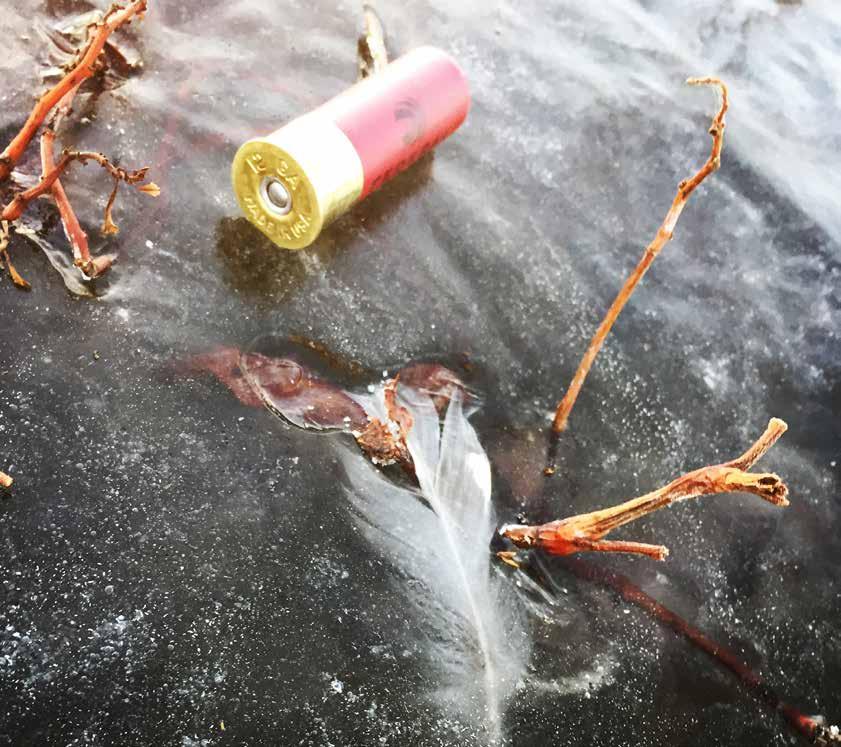
and wildlife agencies, these three sources make up more than 85 percent of dedicated agency revenue in nearly half of the states.
“Many Americans are unaware of the remarkable conservation impact of the Wildlife and Sport Fish Restoration Program,” said now-FWS Director Martha Williams in a press release. “State wildlife agencies dedicate WSFR funds to a variety of conservation projects and programs such as hunting and fishing education, fish and wildlife management, scientific research, habitat restoration and protection, land and water rights acquisition and hunting and boating access. Everyone benefits from these investments, which have ensured a legacy of wildlife and outdoor opportunities for all.”
The American System of Conservation Funding is often discussed alongside the North American Model of Wildlife Conservation, but these two are not interchangeable. The North American Model is a set of principles – first aggregated and articulated by Valerius Geist, Shane Mahoney and John Organ (editor’s note: read Organ’s “The Origins and Purpose of the North American Model of Wildlife Conservation” in the fall 2022 issue of Backcountry Journal) in the early 2000s – that in their collective application distinguish wildlife conservation in the U.S. and Canada from other forms worldwide. It is silent on funding and on specific laws or policies. The American System of Conservation Funding describes a specific set of policies that fund wildlife and fisheries conservation. It’s a nuanced distinction but an important one for the sake of this discussion.
The stories of conservation in this country we often hear and tell are critically intertwined with this model and this system. They often begin toward the end of the 19th century when market hunting was decimating large game populations and hunter-conservationists of the day leapt into action to stem these declines. A critical piece of this campaign to conserve wildlife was establishing a system of funding to ensure dedicated, future professionals would be able to make a living improving populations of public wildlife, restoring habitat and managing land for all of us to enjoy.
“The American System of Conservation Funding was developed by hunters and anglers nearly a century ago and generates nearly a billion dollars annually,” said Ted Koch, BHA’s North American board chair. “We chose to tax ourselves and have led conservation funding since. This is the foundation for the most successful approach to wildlife conservation in the world and is essential for maintaining public ownership of wildlife to avoid limiting access to only the wealthy who would gladly pay for the exclusive privilege.”
These funds facilitate the management of nearly 35 million acres of state lands, have sent more than 2 million individuals through hunter safety programs and over the last 85 years have bankrolled the recovery of iconic North American wildlife. We all benefit from this legacy, but it is under threat.
While the Dingell-Johnson program has remained untargeted, the Pittman-Robertson account has come under fire from both sides of the aisle.
“The RETURN our Constitutional Rights Act would recklessly unravel Pittman-Robertson funding as we know it,” said John Gale, BHA’s conservation director, in a press release. “Its passage would
have devastating consequences for our fish and wildlife agencies and would limit the role of sportsmen and women in funding conservation, diminishing our effectiveness as a constituency. This is a legacy of which we’re justifiably proud – and which we’re committed to continuing in perpetuity.”
Groups on the other side of the political spectrum are seeking to separate wildlife conservation from the firearm industry for other reasons. Namely, they have a desire to separate firearm-based violence from productive and good wildlife conservation efforts or to use those excise tax dollars for causes other than wildlife. Notably, they’d like to see those funds used to better equip urban hospitals that treat victims of gun violence, which is certainly an important cause and is deserving of durable funding. However, tearing down a successful program to stand up another is just poor policy.
Proposals like all of these are universally bad for wildlife and undermine our 85-year-old, bipartisan American System of Conservation Funding. However, they do force us to think about how we would fund wildlife conservation if these policies, or those who contribute to them, disappear.
As conservationists, we know that these funds are critical to the important work of state fish and wildlife agencies and must be protected at all costs. However, these policies may also be improved or diversified. Other items could be taxed. Tribal wildlife agencies could be made eligible for these funds. Monies from other sources could be made available. But if we want to maintain or improve this system, it’s up to us to do so.
“The numbers are substantial: Lifetime Pittman-Robertson contributions from gun and ammunition manufacturers total more than $15.3 billion. Last year, $1.5 billion was apportioned to the states for conservation. Of that, $1.1 billion is tied directly to sales of guns and ammunition.” said Land Tawney, BHA president and CEO. “These dollars are critical to our wild places, and they have led to the successful restoration of elk, mule deer and pronghorn populations in New Mexico and Montana, as well as species like wild turkey, waterfowl and white-tailed deer all across America.”
If you want to do something about this today, pick up the phone and call both of your senators and your representative in the House. Let them know that you support the Pittman-Robertson program and oppose any policies that would attempt to dismantle it. I’ll do the same, with as many offices as I can, and hopefully we can keep this system of conservation funding alive, well and diversified in the next 85 years.
BHA member Charlie Booher is a conservation lobbyist at Watershed Results LLC and holds degrees in wildlife management, public policy and natural resource conflict resolution from Michigan State University and the University of Montana. Outside of the office, you can find him hiking the mountains of Western Montana and relearning how to hunt and fish in the Northern Rockies.
These funds facilitate the management of nearly 35 million acres of state lands, have sent more than 2 million individuals through hunter safety programs and over the last 85 years have bankrolled the recovery of iconic North American wildlife.
Imagine if someone put the same time, thought, and effort into designing fishing apparel that you put into finding fish. Someone did; we’re Skwala. We make thoughtful, dependable, comfortable gear—so meticulously built and thoroughly tested that you hardly notice it. Allowing you to focus on more important things, like fishing.


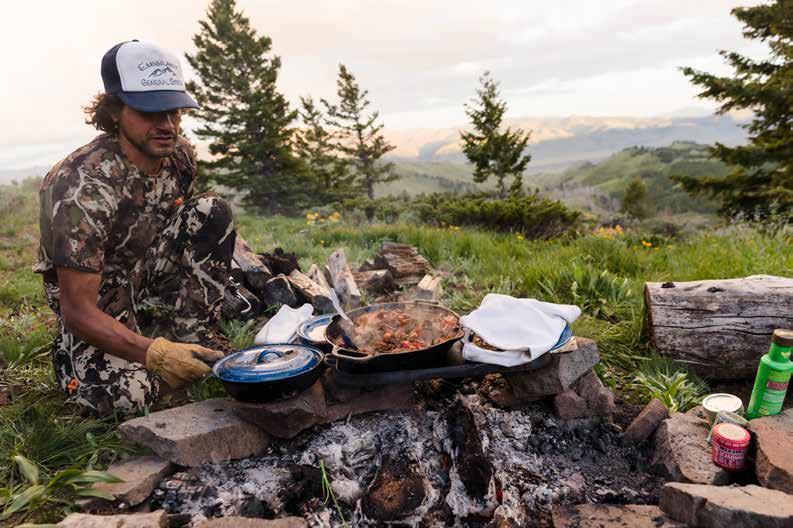












Wind howled through the canyon like a locomotive, snapping fire-blackened aspens and leaving a graveyard of widow-makers and deadfall in its wake. When we set camp, I had been excited to use my new tipi tent – the kind with the three-hands-required-for-assembly wood stove.
Now I was going to die in this tent.
I looked over at Ronan – a friend I was deployed with twice overseas – for solidarity in our final moments before being pulverized by whatever angry mountain god was responsible for this cacophony of exploding tree trunks and flying splinters.
He was asleep. That son of a bitch.
Alone with the demons, I crawled deeper into my bag and waited.
enemy tracers snapping past with a distinctive “crack” – the kind every U.S. Marine recognizes from working pits at the rifle range.
A year later, I couldn’t get the boom out of my head.
To make matters worse, I lost my team to the confusion of redeployment home amid the chaos of the pandemic’s early days. By the time we figured out that covid was bad, but not zombie apocalypse bad, we had been working remote for six weeks. Then, I was transferred to another unit. It felt like getting ripped out of bed in the middle of the night and forced under the covers with someone else’s wife.
I felt as though I was imploding. I needed space to get away from the pressure and return to my true form. I needed space to think.
Wilderness. Colorado. Durango. All the right words.
Hermosa Creek Wilderness Area sits within the San Juan National Forest, just north of Durango, Colorado. I picked that spot because it had all the right words – wilderness, Colorado and Durango. I always wanted to be in a Western. It’s more than 37 thousand acres of hog-backed ridges and incredible drop-offs, which was where I was headed if I couldn’t figure out a way to clear my head.
2020 had been a bad year. Not because of the pandemic, though that was part of it.
In some far-off place on the ragged edge of the empire, my new year rang in with fireworks and a light show. Only, the fireworks were rocket-propelled grenades and mortars. The light show was

As the military saying goes, “Two is one, and one is none.” I needed a wingman. Immediately, I thought of my friend Ronan. He was not a hunter. He neither caught fish nor fired guns outside of the military, but he was a man after my own heart.
The first time we ever did anything together, a miscommunication put us on opposite sides of the same mountain. Each thought the other ditched at the last minute, so we attacked separate routes –only to run into one another at the summit. I knew he would meet me at the top of whatever mountain we needed to climb.
I was raised in the woods. I grew up a houndsman, deer hunter and waterfowler. Training for war in the swamps of the Marine Corps Base Camp Lejeune, North Carolina, felt like another racoon hunt – just more serious. As if the raccoons had guns and deadly
intent. But the world of Western hunting was new and my depth of research consisted of a couple episodes of MeatEater. Naively, I figured, “If that guy could do it. …”
The day before getting to Durango, the day before sliding from one type of abyss into another, I picked up Ronan from a small airport in northern New Mexico. He had just completed military free-fall parachute training, which made him “sky trash.” I could still smell the wind and terminal velocity on his clothes when he got in the truck. Everywhere he went you could hear Tom Petty’s “Free Fallin’” in the background. He was the high to my low. Balance.
After a dark journey through the country, which I am certain was beautiful in the daylight, we pulled up the long dirt road to our predetermined parking area about 0400. Along the way we passed a small parking lot with a wall tent and three pickups. I, however, was headed for the end of the road.
We were greeted by a full-blown outfitter camp. Horses, walltents, rifles and coffee were everywhere. Guides were packing mules for the ride in, and hunters were lazily finishing up their bacon and eggs. It looked like heaven. We must have looked like a couple of sinners strolling through the pearly gates. That’s the reception we got, anyhow.
A man similar to Saint Peter, mounted atop his high horse and waving his hand in a 360-degree circle, looked down at us and said, “You boys need to get out of here. We lease the hunting rights from the Forest Service for this whole area. All you had to do was call and ask.”
“We’re just trying to get to public land,” I told him, incredulous that anyone could lease exclusive hunting access to a federally designated wilderness area.
I began to lay out Forest Service maps on the tailgate, listening to “All you had to do was call and ask,” being repeated over and over while trying to figure a solution to our problem. That’s when the weather solved it for us.
A tall man with a long, gray beard walked over to “Saint Pete” and said, “Forecast looks bad, Steve. We need to get out of here before it gets worse.” Despite his small stature and cantankerous nature, I could tell that Steve was in charge and had a tough decision to make. I understood the predicament.
After a few hand gestures and another, “All you had to do was call and ask,” we headed back to the lot with the pickups and wall tent. We should have kept driving – all the way back to town.
That’s what “Saint Steve” and his horse wranglers did a few minutes later.
By 0500, they packed up heaven and left us in hell. We just didn’t know it yet. We didn’t know hell was cold, either. It was about to freeze over.
Watching “Steve the Apostle” and his entourage snake their way down the mountain, Ronan and I rucked up and walked back to where the outfitter camp had been. Smoldering ashes dumped from a wood stove and a few steaming piles of horse shit were all that was left. It was a ghost camp. That’s when it began to snow.
With the swirl around us, Ronan and I started walking. I’d never hunted elk, and he’d never hunted at all, so we defaulted to our common baseline experience – patrolling. We walked like we were in the film, “The Hills Have Eyes.” Elk eyes.
We crested each ridge with the same ceremony granted to Richard Connell’s short story, “The Most Dangerous Game.” Each man moves to the flanks, head up, rifle at the ready. Unless contact
We hunted elk as though they were hunting us. It was both strange and familiar.

is imminent, the rifles are swapped for glass as the observers scan, by quadrant, the opposing hillsides as they come into view. Nothing. Map check and continue to move. We hunted elk as though they were hunting us. It was both strange and familiar.
We barely spoke all day – our communication done with gestures and hand-signals. Once, seeing a cow elk at the edge of the burn we entered, we practiced our setup and shot sequence, crawling up to the ridgeline, placing rucks out front as rifle rests and getting the spotter positioned to observe the shot. But with only a bull tag, we painstakingly reversed the process and left her to graze, undisturbed.
We moved that way for the rest of the day, cutting cross-country and deeper into the burn. For mile after jagged mile, the charred and blackened remains of what once was a forest rose like specters around us. We were alone, walking among them, living in the presence of the dead.
Our first day ended in that canyon bottom, a place I thought would shelter us from the wind. A creek ran alongside, and the remains of another outfitter camp stood nearby with rings of river rocks marking the graves of campfires past. I took them for sign that this was as good a spot as any to set a spike camp. With water replenished and a warm meal in our bellies, we took shelter for the night, a thin layer of polyester and nylon encapsulating us from the accumulation building outside. That’s when the wind truly began to blow.
How does one field dress, with words, the complexities of war, guilt and responsibility?
How can you give a voice to that which drives men to seek shelter in the wilderness?
What spell must be spoken to dislodge what lurks in the unswept corners of the mind?
In the summer of 2018, two years before we found ourselves encamped in the desolation of that canyon, a pair of wildfires converged on the Hermosa Creek Wilderness. What’s known as the 416 Fire came from the east, ignited by embers from a coal-fueled passenger train, becoming the sixth largest wildfire in Colorado history. The Burro Fire came from the west, source undetermined.
Most fires build resiliency in forest ecosystems. With the underbrush gone and pathways for sunlight open to the forest floor, new growth and sources of sustenance are created. But if a fire gets too hot and if too much time passes without nurturing the flame, fuel sources build, heat burns through bark and cambium, soil becomes unstable and the forest dies.
From opposing sides of the same mountain, the 416 and Burro fires attacked their separate routes – running into one another in the abyss of that canyon. At their confluence, the combined heat built to the level of inferno, and they killed the forest.
We knew none of that at the time.
The wind grew to hurricane force. Like a wraith enraged by the sentience of our presence, it howled over the broken bones of a dead landscape. The groan of falling trees built to a Shepherd’s tone and each gust sounded the swing of snath and scythe. Skeletons of trees began to fall, halved at their shins. The rattling of bones drew nearer, joints exploding under the weight of an unseen menace. With each swing of the reaper’s blade, each shatter of wood and sanity, the squall intensified. The walls closed in around us and drifts of snow pressed against our bodies through the tent walls.
And then it passed.
The dawn brought a scene almost surreal. Under the rising sun, the corpses of wind-felled trees were arranged like a dry-ground replica of old museum photos from the logging boom – the ones in which a thousand timbers float down an impossible rapid, young men with axes precariously perched on the pinnacle of their accomplishment. And right in the middle of that river was our tent. Fire and wind had distorted the reality of the mountain.
The deeper truth? Maybe it was that “shit happens” – and sometimes you survive.
Whatever the lesson, we needed to get out of that canyon. Altitude sickness set in. I was losing weight from both ends. Ronan, having just spent six weeks at 13 thousand feet – at least until the light turned green and he jumped – remained unaffected. He outhiked me to the point of embarrassment.
When he offered to share the load, I was slumped into a snow drift, my pants around my ankles and head between my knees. “This is my rifle. There are many like it, but this one is mine,” I told him. I held my rifle like the last vestige of dignity that it was. I’d as soon die as hand it over. I let him carry the tripod, but we don’t talk about the tripod.
We wanted out, but the mountain opposed us, positioning the twin impediments of deadfall and snowdrift like an abatis. And so, as the hours dragged on, I accepted the gift of time and pondered, “Wasn’t this why I’d come to this place? The place with all the right words?”
What are those words, “the right ones?” How does one field dress, with words, the complexities of war, guilt and responsibility? How can you give a voice to that which drives men to seek shelter in the wilderness? What spell must be spoken to dislodge what lurks in the unswept corners of the mind?
At some point, we navigated the last obstacle and broke into open country. The wind-swept and ash-strewn landscape gave way to an expansive wilderness studded with life. We stopped to rest and refit.
Whether from altitude sickness or a deeper struggle I do not know – my insides desperately wanted to become my outsides. I did the one thing known to conjure opportunity at the worst moment – I stepped behind a bush and dropped my drawers.
“Elk!” yelled Ronan. Push, wipe, bury.
Yellow forms crested the ridge a mile to the east and one by one dropped into a south-facing meadow. Two bulls, one much larger than the other, trailed a herd of 30 cows.
We ran to beat the sunset. Wind at their backs and sun in their eyes, the elk didn’t notice the two forms moving to intercept them. We dropped rucks and checked the range – 500 yards on the nose, which is qualifying distance on the rifle range.
The rifle barked, and the larger of the two bulls flinched as he looked for the source of discomfort. The distance, wind and terrain made locating us impossible, and the herd stood like statues in the meadow. Three more shots and the bull dropped in place – exactly where he stood when I began firing seconds before. When we reached him, four entry wounds pockmarked a softball-sized space behind his shoulder, exiting from what appeared to be the same hole on his opposite side.
The next day’s pack-out took 10 hours, and we reveled in the brutality of it. That night, at a roadside café on U.S. Route 160, I cut a piece of cake and gave it to Ronan in celebration. The date was Nov. 10, 2020 – the 245th birthday of the United States Marine Corps.
The bull hangs over my wife’s piano in a place of honor. I had him painted in the tradition of Dia de los Muertos –the Day of the Dead. I wanted him to know that I value his place in my household, and that he was worth more than antlers and bragging rights. He rests there, watching over my children as they turn his flesh into questions about what his life was like, where he came from, and if he misses his family. In being remembered by us, honored by us, he lives with us. His presence is a powerful reminder of the mountain’s timelessness – and of our responsibility to it in the time it gives us.
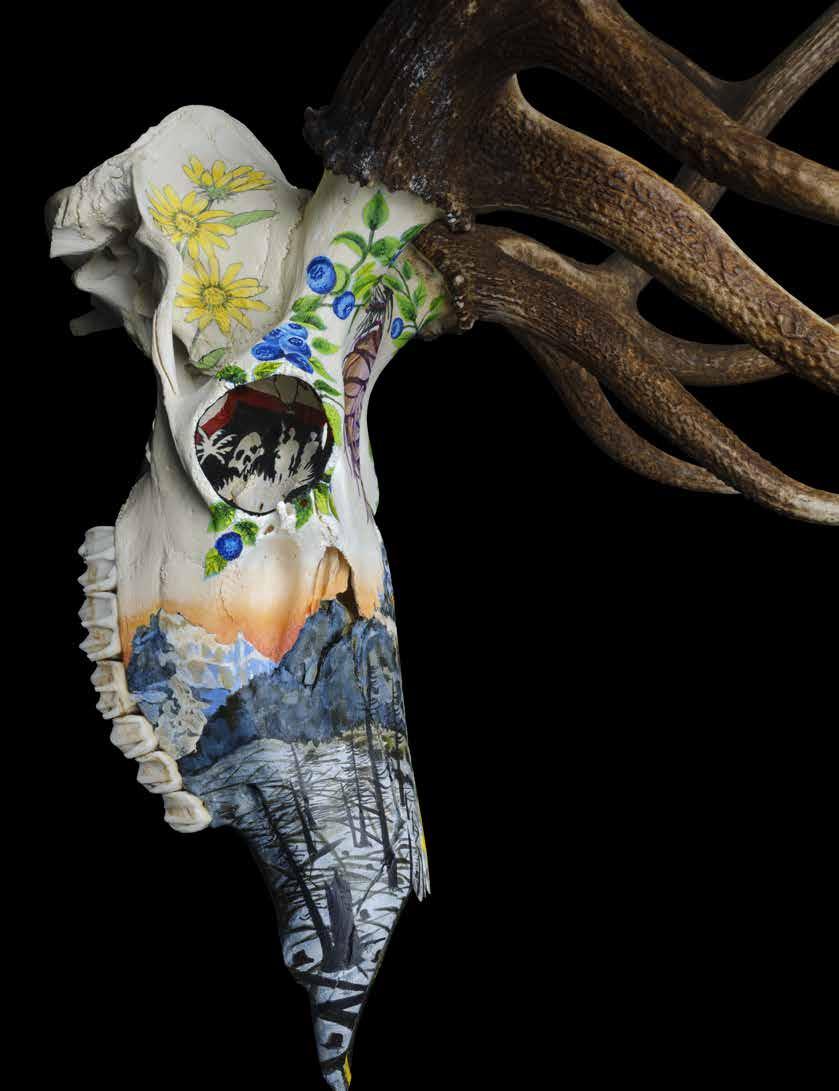
I entered into our union in the sweat of my labor. I left in repose, convinced through storm and struggle that Thoreau was right – “In wildness is the preservation of the world.” In wilderness there is salvation, for me, anyway. I found it that day on the mountain, the day Ronan helped me shoulder the load as we climbed out of the abyss, to a place with all the right words.
This story is dedicated to Lauren, who had the grace to let me go – and to Ronan, who had the audacity to go with me. And to the bull.
BHA member Jake Lunsford is a U.S. Marine and National Defense Fellow and Visiting Scholar at Brown University’s Watson Institute for International and Public Affairs. He has written for The Providence Journal and Tom Beckbe Field Journal. To read his work, visit jakeforrestlunsford.com
Editor’s Note: Any views expressed in this story are those of the author alone, and do not reflect those of the U.S. Department of Defense, the United States Marine Corps or the Naval Service.
Artwork: Kobe Jackson Photo: Jamil Fatti



As much as hunting is a journey into the outdoors and wild places, it is a journey into the self, an exploration of one’s limits in the natural world.
BY CHRISTOPHER ROSSTwo months into season eight of the survival competition TV show “Alone,” Clay Hayes, a BHA member, was sinking into a funk.
As fall turned into winter, the days got shorter and darker, and the temperatures dropped below zero. When the weather was bad –which it often was – he was forced to spend days at a time inside his hand-built shelter with only his thoughts for company.
On day 66 of his total immersion into British Columbia’s wilderness, rain lashed the log walls and wind howled, forcing smoke down Hayes’ chimney. He couldn’t even build a fire. Left to sit in the cold darkness, the miseries of his self-imposed trial seemed to multiply – lack of food, lack of pen and paper and, above all,
missing his wife and two sons.
During those moments, it was not the ability to build shelters or find game that helped Hayes survive and win the 2021 season – it was mental fortitude, a practice Hayes learned through a yearslong study of the philosophy of Stoicism.
An ancient Greco-Roman school of thought that emphasizes calm acceptance in the face of fear, loss, joy, death and anything else that fate may hold in store – Stoicism is experiencing a resurgence. Embraced by high-performing professionals in Silicon Valley, the NFL and the military, it has also gained acceptance among prominent North American hunters and anglers, like Hayes.
Advocating for a Spartan simplicity and detachment from the comforts of life, Stoicism speaks to the kind of person who willingly

“Outdoor adventures are full of moments that suck,” said Hayes. “No one likes being cold and wet and hungry. But that’s the price we pay for amazing experiences. We can’t control the weather, or anything else outside ourselves, but we can control how we respond to it.”
carries only the essentials while hiking into the mountains in search of big game.
The stress on mastering individual agency and leaving the rest to providence makes Stoicism the natural, and perhaps necessary, state of mind for backcountry outdoorsmen – those who may nail scouting and preparation but spend days in the woods without seeing a trace of antlers or getting a trout to bite on wild waters.

“Theodore Roosevelt took a copy of Epictetus with him on his ‘River of Doubt’ expedition, probably for the same reason that hunters are reading the Stoics today,” said Ryan Holiday, an author and one of the catalysts of Stoicism’s modern-day revival. “They’re about toughness, resilience and presence as well as disappointment, fear and courage.”
In a 2021 episode of the BHA Podcast & Blast, Hayes spoke about the role Stoicism played in his “Alone” victory with host and journalist Hal Herring. A lifelong hunter, Herring himself is an acolyte of Stoic thought. He was turned onto one of the philosophy’s primary texts, “Meditations” by Roman emperor Marcus Aurelius, after hearing author Elizabeth Gilbert cite it as one of her favorite books.
“If a person really wants to be a backcountry hunter, and they aren’t yet a Stoic, they soon will learn the basics, or they will give up that kind of hunting altogether,” said Herring.
Two of the main contemporary evangelists for Stoicism –Holiday and life-hack authority Tim Ferriss – both hunt.
When Wired to Hunt podcast host Mark Kenyon posted a video of the five books he thought all hunters and anglers should read, among his selections was Holiday’s “The Obstacle is The Way.” Kenyon has also cited books such as “How to Think Like a Roman Emperor” by Donald Robertson and “The Socrates Express” by Eric
Weiner as influential in his approach to whitetail hunting.
“A lot of the things I talk about when it comes to mindset and dealing with adversity, how I try to process things, I’m often using concepts that were advocated for, and really established, in the public consciousness in that Stoic era,” said Kenyon.
The philosophy was first developed around the third century B.C. by Hellenistic thinkers such as Zeno, Cleanthes and Chrysippus. Later adopted by Roman culture, figures such as Epictetus, Seneca and Aurelius focused the philosophy on its practical applications to living a more virtuous life. Through the centuries, Aurelius’ “Meditations” and Seneca’s “Letters” have become the philosophy’s most widely read texts.
Aurelius was an avid hunter. “For a philosopher, he really knew his way around the outdoors,” said Holiday.
Though Seneca became wealthy as an adviser to the Roman emperor Nero, he committed himself to a lifestyle of physical privations – plain fare, cold baths, hard mattresses and daily runs. When Nero ordered him to commit suicide, he was “unperturbed,” according to an account by Tacitus. Though both men wrote of the struggles to live up their own ideals in such personal, relatable terms, their ideas remain potent thousands of years later for today’s backcountry hunters and anglers.
Two central tenets of Stoic thought helped Hayes pull out a victory on the show – and of note, he was also the only one that season to harvest a deer with bow and arrow. One was the idea of impermanence or flux. As he sat in his cold lodge, hungry and lonely, he reminded himself that what he was experiencing was only temporary – that one day it would seem like it had passed in the blink of an eye.
“Outdoor adventures are full of moments that suck,” said Hayes.
Drawing on his study of Stoic thinking, he steeled himself to remember that “all I can do is move forward and control what I can control.”
“No one likes being cold and wet and hungry. But that’s the price we pay for amazing experiences. We can’t control the weather, or anything else outside ourselves, but we can control how we respond to it.”
That was the second key to what he cites as a mental turnaround that helped him push through his darkest moment on the show –remembering that there’s no point to worrying about things that are beyond human dominion. Stoics believe that the universe is ordered according to a higher design known as “logos,” or nature – what we might call fate – which should be affirmed no matter how unjust it might seem at any moment.
In “Meditations,” Aurelius valorized the type of person who is “undefiled by pleasures, invulnerable to any pain, untouched by arrogance, unaffected by meanness, an athlete in the greatest of all contests – the struggle not to be overwhelmed by anything that happens.”
For Kenyon, hunting offers a kind of microcosm of life in which to practice the precepts of Stoicism. “[Hunting] squeezes things down. It compresses challenges and adversity. It compresses the highs and lows and life. And Stoicism provides you with a set of tools to navigate that,” he said.
While filming an episode for a show last year, Kenyon took a shot at a buck and missed by about an inch, his bullet sinking into a tree trunk as the deer ran free. It had been a hunting season defined by such moments – close calls, near-misses and mistakes – and the lost opportunity demoralized Kenyon.
Drawing on his study of Stoic thinking, he steeled himself to remember that “all I can do is move forward and control what I can control.” Stoics believe in reason as a divinely instilled capacity, meant to rule over emotions and appetites and draw individuals closer to reality.
When another buck showed up an hour later, Kenyon’s mind was clear – and, this time, his shot was true.

Most hunters experience similar moments in the field. As much as hunting is a journey into the outdoors and wild places, it is a journey into the self, an exploration of one’s limits in the natural world. In that way, it is a form of the examined life championed by Socrates, the founder of Western philosophy and an essential precursor to Stoic thought.
The ethical pursuit of fish and game – and long hours often spent in solitude and nature that such pursuit entails – tends to cultivate many of the same aspects of Stoicism, from self-control to simplicity.

For many hunters, that marriage of the practical and the philosophical lies at the very core of their selfhood. “My life and hunting are not separated,” says Herring. “How I live one is how I live the other. Trying to be a better backcountry hunter is not separable from trying to be a better person.”
Christopher Ross is a BHA member and writer based in Pennsylvania.
GOHUNT creates innovative solutions to your greatest hunting challenges. Our maps are buit from the ground up with the features you need to get the most out of your next hunt.



50 States, $50 a year. Experience the difference.

I was nestled on the couch, among a sea of blankets and pillows, nursing our 5-day-old newborn as the clock struck midnight and 2021 rolled into 2022. As is common on New Year’s Day, I reflected on the hunting and fishing seasons recently wrapped up.
From the pages of my hunting journal, it appeared to have been a normal season. We hunted turkey and bear in the spring, spent lots of time in the summer fishing, pursued antelope, deer and elk in the fall, and ended the year with waterfowl and upland game. What the journal doesn’t tell you, but my pictures do, was how I became increasingly pregnant through the seasons.
My husband and I both hunted and fished before meeting, and both activities have been an integral part of our relationship. Conversations about what hunting and fishing with a kid looked like in our future were common, and it was assumed by both of us that I would hunt through any pregnancy.
When the spring bear season opened, I tweaked my ankle postholing through snow. My husband was prepared with Tylenol instead of the normal ibuprofen. It was too early to take a pregnancy test, but I was pretty sure I was pregnant.
From there, we dove headlong into the pursuit of gobblers. At this point, my body let me know I was pregnant. Morning sickness hit. The early hunts were brutal, but, as many women know, morning sickness doesn’t just happen in the morning. “All-day sickness” just doesn’t have the same ring to it. The number of naps I needed was astonishing. Growing a parasite inside of you is hard work.
As I progressed through my first trimester, I listened to my body and figured out what made me feel better, which turned out
to be eating all the time. Little snacks kept the nausea at bay. First trimester, I also picked morels as a low-impact activity, because I could still easily bend over and cut them. Unfortunately, the smell of dehydrating morels in your kitchen was a great way to induce the nausea I had worked so hard to keep subdued.
The first trimester transitioned to the second as spring hunting transitioned to summer fishing. We wanted to try to do a more catchand-cook fishing so I would have a great source of docosahexaenoic acid (DHA) for the baby’s growing brain. With the energy surge of second trimester, these outings were invigorating.
We planned our annual five-day backpacking trip in July to be centered around stocked alpine lakes. I hadn’t slept on the ground in a while, so the first night was the test before we got too far from the van and its luxurious, six-inch memory foam mattress. After a rough night, I may or may not have cried over the morning’s runny oatmeal. But I persevered, and we continued with what became a fantastic trip.
The second trimester was rounded out with a weeklong archery antelope hunt and a month of archery elk. Combining the childhood games of red light, green light and Twister, while sneaking through 18-inch-tall sage brush to get within 50 yards of an antelope is hard enough – and that’s when you aren’t five months pregnant! You could make it easier and sit in a blind, but crawling goes along with pregnancy recommendations – hands and knees can help turn the baby into the proper position for delivery.
I do a lot of solo hunting for elk, but this year looked a little different. Now, my husband or friends were on the other end of the radio and within walking distance. We quickly realized that what used to be a half-day hunt was now a full-day hunt. There were times


that my husband had to strap my bow on his pack so that I could climb out of a hole we chased a bull into. You know, the hole you said you wouldn’t go into again, but somehow you managed to wind up down it anyway; I had to climb out with 25 extra pounds (not elk backstraps), with my lungs being squished by a kicking baby and having to pee every 20 minutes.


Obviously, I love elk hunting. It’s worth the extra hassle, and this season was one of my favorites. It was riddled with frustration, as I figured out my changing body (and wardrobe). But I wouldn’t trade the time I spent with my husband for anything. We both knew we wouldn’t get another season like this, together, for a long time, so we cherished every outing. Being able to pack out an elk together was icing on the cake. And by we, I mean my husband, who did multiple trips while I finished the field dressing and carried out a whopping 15-pound load. Filling our freezer, and knowing we had lots of good, healthy meat to eat while I continued to grow our child (pre- and post-natal), made us feel fortunate.
The third trimester hit with the pheasant opener – thankfully there were no more hills to climb with my diminished lung capacity. Cue sauntering along as the dog does most of the work. Rubber boots don’t require bending over to tie, which was another small blessing for the maternity hunter.
The downsides of pheasant hunting while very pregnant were
diminished bladder capacity and swinging emotions. Multiple hunters got flashed when I had to pee yet again (there’s not much cover at the wildlife management area we hunt) and others witnessed a sobbing pregnant lady in the middle of a field alongside an obstinate English springer spaniel who decided she was done listening for the day.
The final three months ushered in waterfowl season. I was ready. I’d modified my old waders to become fashionable, maternity waders with stretchy side elastic for my growing belly.
We normally kayak hunt, but there was no way I was going to be able to get in and out of a kayak that season. Early on, I could still get in and out of a canoe. We fortunately have a good friend with a duck boat, and I managed to porpoise over its sides. Late season, when I hit eight and a half months pregnant, and then nine months, we changed to spots I could walk, or waddle, into where my husband could kayak with the decoys.
This was the second season with the bird dog. She really came into her own for waterfowl, which was good. Otherwise, I would have started feeling bad about making my husband wade through boot-sucking mud for my birds.
I rounded out my 2021 hunting season with a final day of waterfowl at about 38 weeks pregnant. Dropping one last mallard, I was happy with my hunting and fishing seasons. While there were
challenges, it was all worthwhile. I was outside, active and enjoying our public lands.
My advice to any other mama-to-be – just get out and do it! Listen to your body and your doctor, and then attack outings with a flexible attitude. Husbands and partners, get your mamas-to-be out there with you or encourage them to go with friends. You signed up for this ride and the changes that come with it.
At times, from the perspective of the pregnant person, it all seems a little daunting. An extra push from a partner can be just what is needed to get you out. Believe me, neither of you will regret the time spent together.
Melissa Hendrickson, her husband Jamie, and their new son Anders are BHA members. They live in North Idaho, where they spend as much time outdoors as possible. Anders has been duck and rabbit hunting from the comfort of a carrier pouch on his parents’ chests. He is the proud new owner of Idaho’s lifetime hunting and fishing license.

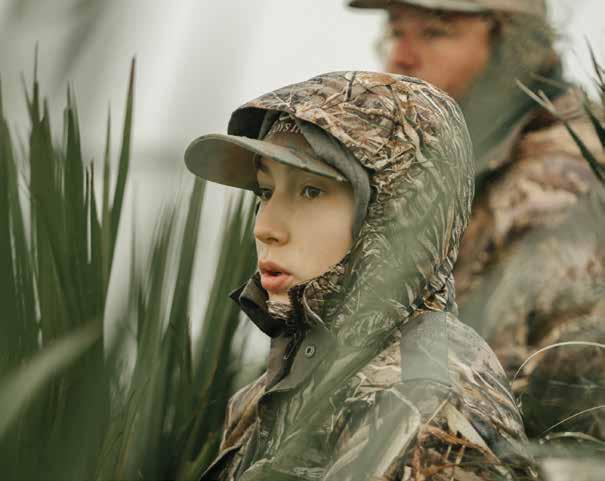
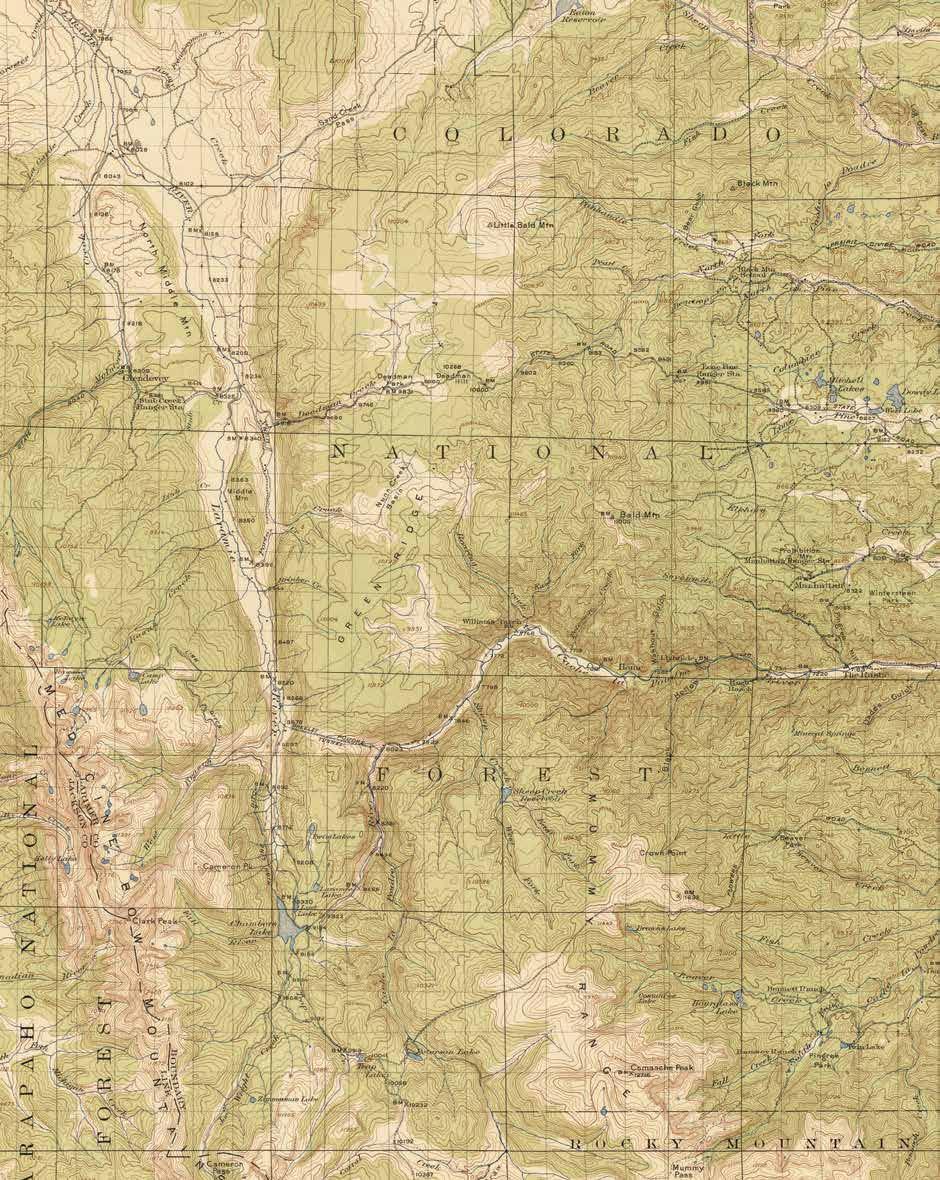
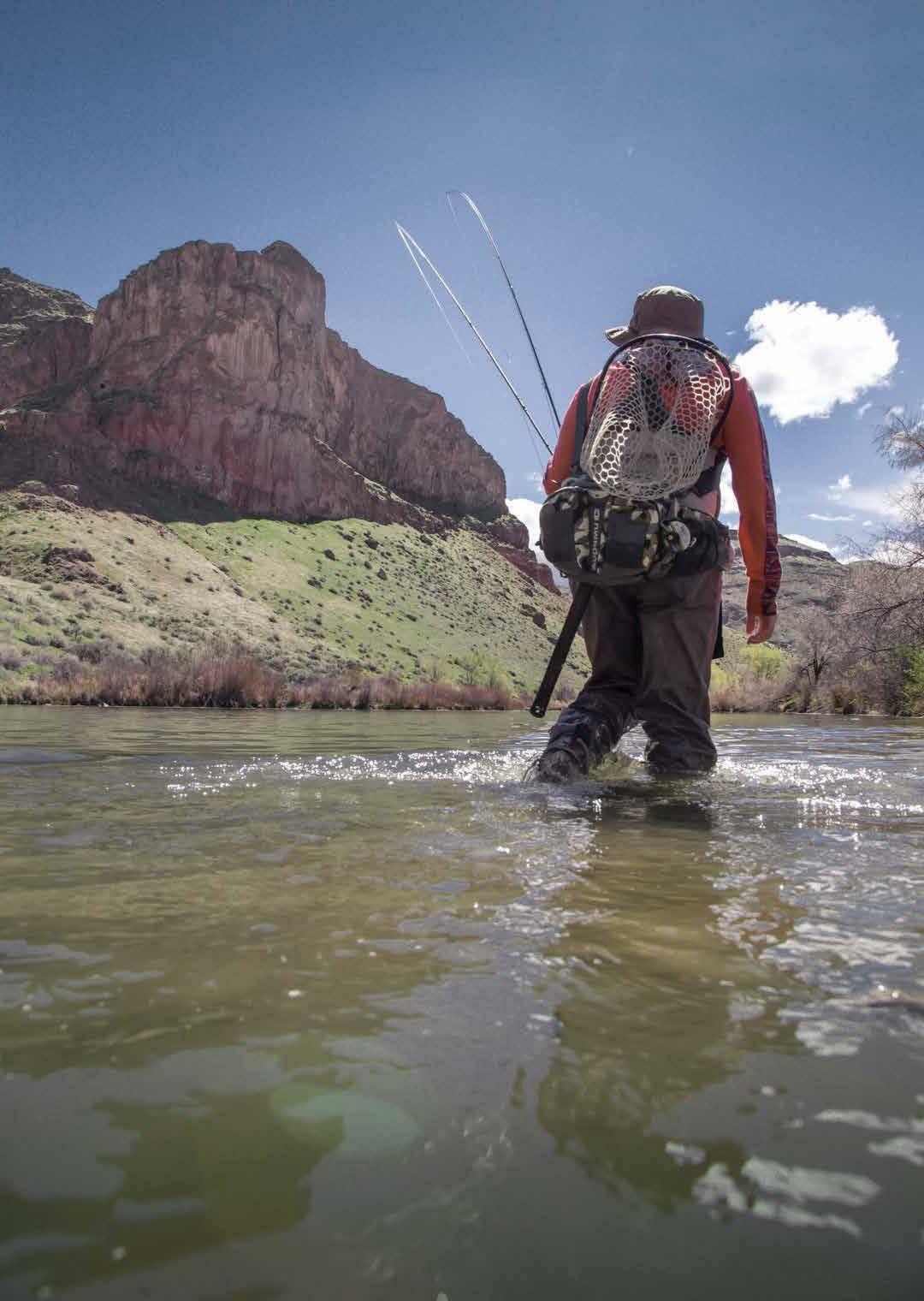

Winding through my mind is a trail, which leads back to a beginning. As far as I know, it’s when my own life began. Along the way, specific moments have remained. They’ve left marks on the trail. I notice them as I walk back through the trail in my mind.
It was a cold morning. The yellow of cut cornstalks glistened below a blue sky. Little draws made by water folding down shallow hillsides were dark and cool, as the sun rose over the rolling fields of Southeast Nebraska.
We got out of my dad’s Toyota and opened the rear hatch. On the gun rack was my Remington single shot 20 gauge. When I picked it up, it felt heavy and cold in my hands.
Steve met us at the top of the hill. He wore a tan vest atop a hunter orange long sleeve. My dad greeted him. They stood talking, both of medium height and strong build. My dad had bright green eyes, high cheekbones and dark hair, which was quickly graying. Steve had a FuManchu mustache – and Dad was clean-shaven. While they talked, our useless black Lab mutt Buddy prowled the edge of the field.
We walked downhill, away from a few outbuildings and a house. We stalked toward one of the draws, crunching through corn chaff and walking the spaces between the rows in a wide line. The air was crisp and cold. Buddy ran all over the place, the experience of his confined city yard living cast aside.
The first pheasant we rousted clattered off to a windbreak of trees, well out of range. Then three got up at once. My dad and Sensei Steve swung and shot. Two pheasants dropped to the ground.
We swung around, heading uphill. Our line widened. The bright
green, red, orange and black of the pheasant hung in Sensei Steve’s game bag as I walked to his left. Then two pheasants took flight behind us. I turned and shot, and so did Steve. One bird fell. I picked it up. It was warm and bloody, soft and heavy, unlike the gun in my other hand, which drooped, breech open and smoking gently, barrel pointing toward the ground.
“We’ll clean this pheasant, then cook it.” Dad said. “I’ll show you how. With flour, butter and salt.”
It was going to snow hard. My dad boiled milk and added thinly sliced Mexican hot chocolate to it. He put it in a thermos and shook to dissolve it.
We got in the car as the first flakes began falling and drove down the road, to the highway, and out of town. The gravel roads were unplowed. His skill bore us through, and we didn’t get stuck. We parked at a game refuge, near a lake. The world was coated in pure white, and the sun came out between flurries of snow, blinding me.

Dad had his old .30-06 slung over one shoulder. He was wearing a black and orange hat from his time up in Fairbanks, Alaska. We crossed a field toward trees, looking for deer tracks.
Below the cottonwoods the air felt freezing and still. The lake was too far away to see, but through the flatness of the land I could sense it. My dad pointed out a vole track – and you could see where the vole popped his head out to look around. We followed it for quite a while, the little pops in the snow clearly visible against the flatness all around us. Then there was a scraped area of snow, edged by the marks of wings.
For a few hours we walked through the trees, looking for any kind of sign. We saw none, so Dad told me stories of how he grew up hunting in western Oregon for deer. His first deer he shot in the antler, because right as he fired it jumped. Grandpa finished the buck off with a perfectly placed shot.
My grandpa could hit a target the size of a can lid from 50 yards, offhand with iron sights. My dad used to ride in the back of their pickup, shooting ground squirrels as they ran along the edge of a field above irrigation ditches. I had 20-15 vision from Grandpa. They both hoped I would be as good as them.
The snow returned as we sat on a downed cottonwood. We shared hot chocolate in those little red plastic cups. It was burning hot, so I
Photo courtesy Hudson GardnerMy dad showed me this feeling – in the fields of Nebraska, in the patches of remaining prairie, in the bright blue skies, in the silence of the winter fields. He showed it to me by accident, or maybe from a deeper knowing.

dipped my sandwich in it. We didn’t see any deer on the way back.
“This spring I’ll take you duck hunting.” Dad said, but he never found the time.
It was dark when we pulled into the empty campground. We hadn’t seen anyone on the dirt roads for hours. My dad stepped out of the truck into the humid air and set up the tent. Cicadas droned as I helped push stakes into the soft, grassy ground. All around us grew oaks and hackberry trees. Below them crowded viburnum bushes. I couldn’t see far into the dark, beneath the trees, where the leaf litter built up, and the forest, in daytime, was open and clear.
We started a fire with split wood we brought. Dad split kindling really thin with a hatchet. It was pine, so it burned brightly and didn’t smoke. We fried Spam over the flames in a pan or with sticks, or both. We ate smoked oysters with crackers and apples.
In the morning we hiked down to Indian Cave. The walls were light white-and-yellow sandstone. It was cool, protected from wind. From the boardwalk I saw carvings on the wall of the cave. There was a bison with a line extending from its heart to its mouth. There were other scratches of unknown origin. The place had been used for so long, none of us knew who made the marks or how old they were. There were many marks carved over older, fainter marks. And these too had been eroded by wind and rain.
As we sat by the fire again that night and roasted hot dogs, I thought about the bison. I wondered what it would be like to see one walk through our camp, as they used to do here. I remembered once feeling the ground thundering under their hooves as they ran across a valley, then through a river, in Yellowstone.
The moon did not rise, and the stars shone brightly. All around, there was darkness for many miles. Dad told me of the stars above, pointing out the different constellations: Orion, Sirius (the Dog Star), Ursa Major. The histories of people honored, he said, by
what they saw in the sky. I wondered if there was a bison up there somewhere, but Dad did not remember. He was descended from the reindeer people of Finland, Norway and Sweden – the Sámi. But he wasn’t taught the stars they knew. There must be a reindeer there, I thought, and a bison too.
Earlier that day we had driven down a gravel road. Along the road were weasels, coyotes, crows and even a badger that’d been shot and nailed to a fence post. I never saw a house, just endless fields in all directions, edged by copses planted as windbreaks after the Dust Bowl years. The land was clean and being cleaned up more by people, for reasons I couldn’t understand.
I thought about the bison, and if there used to be trees here before the windbreaks – before settlers. The oaks looked hundreds of years old. One of them even had a burn scar. I imagined a group of people coming through, following the bison, like my dad’s people followed reindeer.
Before them, the bison made deep tracks and buffalo wallows in the prairie, which filled with water like little eyes when it rained. After years, those became wetlands and replenished the underground water. I imagined, with my 12 or 13 years of wisdom, that life hadn’t changed from those days. Or maybe it could become like that again. We sat alone in silence beside our crackling campfire, surrounded by the dark woods and fields of Nebraska.
I sit at a table. Outside, wind whips across a little field. The grass, below a sheen of tan leaves and stems from fall, is slowly turning green. On the table are two vases of flowers – one of yellow daffodils, another of pink plum blossoms. I am watching the clouds. They drift to the south in big puffs. I think about my place, about the earth – and where those two come together.
I see a new email from Dad. I haven’t seen him in a year or two. We talk maybe every six months. The last time we hunted together was
18 years ago. Every trip we plan falls through. His life, as a professor and field biologist, has had him traveling to far flung places and left little time for his son. But as the years went on, I tried to be a good son and live up to some kind of legacy he could be proud of – even if we don’t have much time together. The subject line of the email is “Successful Seal Hunt.” I open it.
There is no message, just a color photo scanned from a slide, with a caption. A Yupik man stands next to a dead spotted seal. The seal is elegantly bound to a small, narrow sled. The tightness of the knots and the rounds of the rope show the man’s easy skill. The seal’s head and chest are stained red with blood. In the man’s right hand, he carries a harpoon, tipped with white ivory. The man faces slightly away from the camera. He is wearing an anorak, probably made from reindeer, with the fur facing inward. At his side stands his young son, hiding and staring. The year was 1954. The photo was taken by my great uncle, Dad’s mentor, Bob Rausch.

I don’t know the story of how the man killed the seal. But I imagine it happened like this – he had waited above a breathing hole, spear raised, since early morning. His son stood silently by his side. After hours of silence, bubbles appeared below the thin layer of icy slush that had accumulated, and the seal burst forth. The man thrust the spear into the seal and pulled it out onto the ice.
The wind gusts outside and brings me back to the field, table and chair where I sit and write. Since I last looked the light has changed. Violet-green swallows glide and dive. The sun comes and goes. I wonder what I should write back to my dad.
I am planning a big trip this summer – a few hundred miles through Wyoming and Montana. There is a circle of mountain ranges around Yellowstone that I’ll walk through, with just a ninepound pack, a tent and food. But I won’t be hunting there. At least, not for meat.
Instead, I hope to learn from the land and solidify the days as they
pass through my mind and body. To find self-sufficient moments –ones that don’t need to be explained, cataloged or shared. Moments that leave me with a certain feeling.
I find this feeling in many places, mostly in forgotten ones. In cities I find it in alleys or vacant lots, where native wildflowers grow and structures have been pulled down by English ivy. I find it in empty fields near the edges of town, where I’ve slept like a coyote or deer – waking every few hours, hoping to not be seen or discovered. I’ve found it in high mountain meadows and wide valleys. A quote from the poet, essayist, lecturer and environmental activist Gary Snyder comes to mind: “The earth has always been a wild place,” he said, “and it always will be.”
My dad showed me this feeling – in the fields of Nebraska, in the patches of remaining prairie, in the bright blue skies, in the silence of the winter fields. He showed it to me by accident, or maybe from a deeper knowing.
I may never get to hunt with my dad again, I think to myself, as the wind blows across the grassy field below. But there is still time to learn on my own. Maybe, to mend our relationship in some small or great way. And, maybe, to understand, and reckon with, that I am hunting other things.
For the past eight years, BHA member Hudson Gardner has studied wildness by immersing himself in nature. In 2021, he hiked more than 300 miles in the Greater Yellowstone Ecosystem. He currently studies herbal medicine from both ancient Chinese and modern perspectives and lives in the mountains of Vermont. walkaround.substack.com

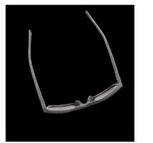

















































































It wasn’t until the year before my father drew his Alaskan muskox tag that I found out he even put in for one. I was talking with someone, and they mentioned submitting their Alaskan draw application before the Dec. 15 deadline – though they knew muskox was a long shot. While I grew up in Fairbanks, Alaska, a muskox hunt never crossed my mind. I curiously rang my father to see if it was on his radar.
“Yah think? I’ve been putting in for a muskox tag since 1993,” he said, almost sounding offended that I was doubtful and unaware of his annual “shot in the dark.” I say “shot in the dark” because this draw is a fresh lottery every year. All applicants have the same chance of being selected – no preference points. I was shocked to learn that I was only three years older than my father’s attempts to pursue a muskox. With the frustration I heard in his voice, I assumed this was the last I would hear of this hunt and his exercise in futility.
Enter February 2020: my father proudly informed me over the phone that he finally drew his muskox tag – and he needed help to make it happen.





























“I’d love to join you!” I said.
What I was really thinking was, “Wait, isn’t this hunt during the winter? On an island? How much flying is required? You know I hate flying. ...”
Basically, I felt like I signed up for adventure where, if the flight there didn’t kill me, surely a broken-down snow machine in the
middle of a frozen wasteland would seal the deal. But he believed my confident words enough to accept my offer.
Then came covid: By August 2020, before a vaccine was developed, it started to look like his once-in-a-lifetime hunt was about to be sidelined by a once-in-a-lifetime pandemic. For any feelings I had of possibly being off the hook, I knew how much this hunt meant to my dad – and how much it would mean to me if things turned around before the season started in February of 2021.
Luckily, they did. Despite having to deal with my own case of covid in December of 2020, the vaccines started to roll out. This was followed by emails of hopeful optimism between my father and our transporter. We selected Ed Kiokun, the Native Village of Mekoryuk’s tribal council president and member of the Cup’ig Tribe that inhabits Alaska’s Nunivak Island, as our transporter. By January, we saw Alaska race ahead of other states in the vaccination process – despite the logistical nightmares we faced – in true fashion of the famous sled dogs Balto and Togo. Ed explained his community had a 90% vaccination rate. It was time to lock in our flights.
Before boarding the first of 10 flights required for this adventure, there were things more important than packing cold weather gear (which I couldn’t forget). I had to make sure I had two letters from the local health department, confirming to Alaska officials that I tested positive for covid in the past 90 days and was given the green light to end my isolation.
With these letters, and my father’s second vaccine dose complete,
I arrived in Fairbanks confident we had the covid scenario as sighted in as our rifle. However, the day after I arrived in Fairbanks, we learned that the Native Village of Mekoryuk required anyone arriving on the island present a negative covid test, no more than three days old, to the tribal police at the airstrip. In Fairbanks, I was told, “We’re only offering rapid tests to those experiencing symptoms.”
We found a way. After getting tested in Fairbanks, we flew to Anchorage and then arrived at my friend Thomas’ house in Bethel. With our flight scheduled to Mekoryuk for 10 a.m. the next morning, we spent the night eagerly awaiting an email containing negative test results.


When I read the email stating my test came back positive, my heart dropped in a way that eclipsed the initial feeling of being covid positive 74 days prior. I knew the test result was due to the lingering covid in my body, but that wasn’t going to be good enough. To compound matters, my father’s results never arrived. With the Bethel hospital closed on Sundays, our only hope was a Hail Mary early Monday morning. We would need to make it to the hospital and walk out with two negative rapid tests before racing over to the airport. Otherwise, we would have had to kiss the whole hunt goodbye.
Covid wasn’t the only one with tricks up its sleeve. In the hopes of raising our spirits, Thomas invited us over to his father’s house for a traditional Yup’ik maqii, or steam bath, that afternoon. We entered full of uncertainty: first, a cold room where clothing was shed, and next, a room where the stove gets so hot that the rocks turn red. Soon, sweat outlines of our bodies formed on the wooden floor. We retreated to the cold room to pour cold water over ourselves, engulfing the room in steam. Again and again, we repeated this process until we were ready to step back out into the world, full of gratitude and optimism.
With our gear packed and hot coffee in our systems, we pulled into the hospital parking lot as soon as it opened Monday morning. We passed a temperature check at the doors. One small victory. With my father schmoozing and cracking jokes with the two nurses administering the tests, we received negative tests. Game on.
The short flight to Mekoryuk was stunning. We were met there by Ed Kiokun. Even with the latest negative results in hand, he had us ride in the bed of his truck for the bitterly cold drive to town.
Normally Ed hosts clients at his own home, but during the summer he had the foresight to build a small 10-foot by 16-foot
cabin to accommodate hunters during the pandemic. Once we settled in, it was up to the weather to cooperate – and Tuesday was not looking good. We had strict instructions not to walk around town, so there wasn’t much else to do besides boost my father’s confidence by letting him beat me at cribbage all day.
Wednesday’s weather looked promising, and Ed led our convoy of three snow machines out of town, bright and early. Not before I beat my father in one last cribbage game, though. This meant he would be wearing the loser’s cribbage necklace that we use to keep track of who lost last. “Look on the bright side,” I told him, “I got my first elk and whitetail wearing the necklace.”
As soon as we left the coastal lands owned by the Yup’ik and crossed into the Yukon Delta National Wildlife Refuge, I gained an immense amount of respect for both Ed and the landscape we raced through. The world and the sky above was the same – and the horizon so indistinguishable that it often looked and felt as if Ed and my father were riding off into the heavens.
Despite these conditions, Ed brought us 40 miles to the other side of the island in three hours. We stopped at what looked like a cliff edge 30 yards ahead of us. Ed suggested that I look at the dunes in the same direction with my binos. “Should I walk up to the cliff so I can see past it?” I asked. We both stood confused for a moment before I raised my binoculars and realized that the cliff was a line of coastal sand dunes a mile away. Thank goodness for Ed.
Our plan was to slowly search the dunes, where the snow accumulation was swept away and the muskox could find their easiest meals. After no luck, we turned north towards the only large hill for miles.
Along the way, we stopped for a quick scan with the binos. At long last, we spotted a large group of muskox off in the distance. No
sooner had we spotted this group when a muskox appeared on the ridge of the hill ahead of us. He quickly disappeared again.
This time, the hill was closer than it looked. As we pulled up to the base, Kiokun said, “I’m a transporter, not a guide, so I can’t help you with the hunt. But, if it were me, I would start climbing the hill because that is where muskox usually head. If I hear shots I will return.”
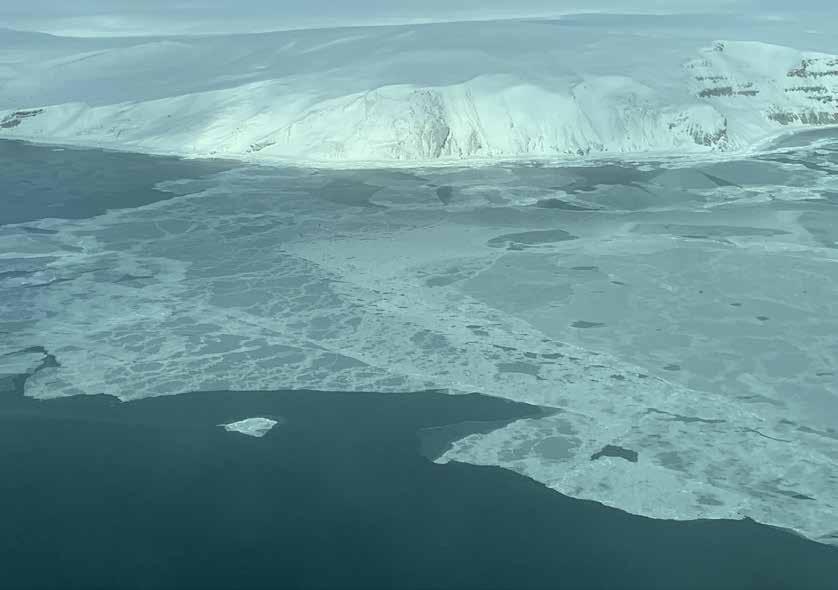
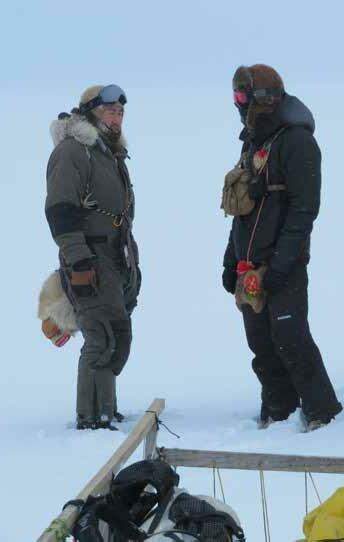
Ed took off and we started trudging upwards.
Before we reached the top, two muskox bulls appeared and took a defensive position on the apex of the hill. My father asked me to use the binos to see which bull was bigger. With my mind curious about the group off in the distance, I looked up and said, “The one on the right has the longer black tips.”
Thinking this was a fun encounter before continuing to search for the biggest bull, I passed the binos over to my father. “Now he’s on the left,” Dad said.
The tone in his voice said it all, and it my mind came racing back to the present from the distant group miles away. While my mind still caught up, my eyes watched as my dad took his time setting up his trekking poles to use as a rest. The two bulls at the hilltop began to seemingly fight over who would step forward as the sacrifice.
As soon as the shot rang out, both bulls charged down the ridge they came up and disappeared in an instant. We started making our way further up when the smaller bull ran back into sight, down the hill in the opposite direction. We looked at each other, faces bearing the seriousness of the situation, eyes beaming with excitement and risk. We reached the top of the ridge and found the muskox bull dead where it had vanished from sight.
To me, this moment was surreal and well-earned after the adversity we overcame that week. I can only imagine what it meant for my Whitehill patriarch – standing successful atop this wild, white hill after waiting nearly three decades to tag this muskox amid a global pandemic, though it now seemed a million miles away.



Kai Whitehill is an outside plant engineer and BHA life member based in Missoula, Montana. He finds fulfillment in the outdoors, where he aims to be a better hunter than his grandfather and a better fisherman than his father.

 Kai Whitehill and his father Barry Whitehill, one of the founding 100 BHA members, escaped the pandemic with a muskox hunt. Photo: Ed Kiokun
Kai Whitehill and his father Barry Whitehill, one of the founding 100 BHA members, escaped the pandemic with a muskox hunt. Photo: Ed Kiokun




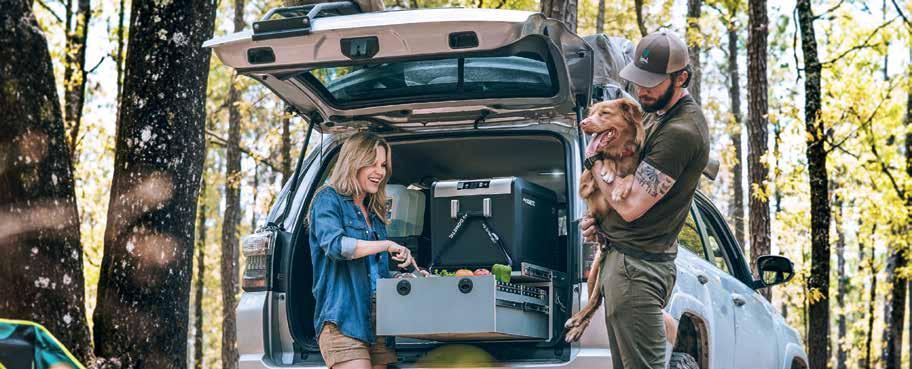

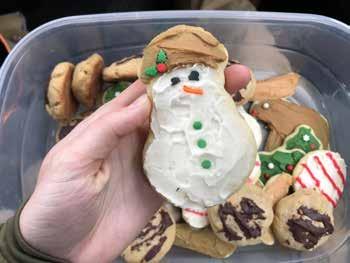 BY CAYLA BENDEL
BY CAYLA BENDEL
December may be my favorite month of the North Dakota hunting season. The pressure from season openers has faded, deer season is closed (filled or not), and my husband Scott and I don’t have to stress about what to do each weekend because there’s really only one option I consider when temperatures dip below zero –busting through cattails to keep up with our bird dog, Finley.

This year, we’ve locked in the weekend before Christmas for our third annual trip to northwest North Dakota.
Previous trips opened our eyes to the world of access, and birds, that exist when you travel far from major cities. The small-town school – converted to dog-friendly hotel, bar, restaurant and convenience store – was the perfect little hunting headquarters. By this point in the season, we hit most of our home turf spots a few times. It was nice to venture into new territory.
Christmas music played on the truck radio, to Scott’s dismay, as I sipped a holiday blend coffee and ate one of the cookies I made for the trip. We planned to hunt our way north and meet our friend David for a golden hour walk near where we were staying. The air was cold and damp, and flurries dropped at our first spot but eventually let up. We quickly learned it’s a one-shot kind of day as our semi-automatic shotguns struggled to eject shells in the cold. We had a rooster each and two Hungarian partridge or “Huns” when we rolled up to the Private Land Open to Sportsmen (PLOTS) tract, which is North Dakota’s walk-in access program.
The three dogs seemed unfazed by the cold and were excited that the day wasn’t over yet. We hit a cattail slough and somehow all three typically trusty dogs missed a rooster that flushed just behind us. I turned fully around and shot, and to my surprise, it fell. The dogs rushed back and redeemed themselves on the recovery.
As we neared the end of the slough, we watched a covey of sharptails flush over the hill – notorious for their late-season habit of doing just that. They bested us again, and we turned back toward the trucks with one more good-looking patch of rushes to hit, but not before David stumbled into the treasure of the trip – a 32-gallon trash bin. I couldn’t help but laugh as I watched him drag the bin behind him for the rest of the hunt, partially out of stewardship and partially out of practicality.
Just then, a bird flushed out of range and chaos ensued. Birds erupted everywhere. Just when I got ready to shoot one, a different flush distracted me. David, who was lagging behind with his bin, rushed to catch up. I didn’t end up firing a shot. Chaos calmed, Scott had shot one rooster, and we laughed as we regained our composure.
We rolled into the hotel, bar and restaurant in the dark and checked in. Finley happily made himself at home on the queen bed, and we threw boots on dryers and walked down the hall for some warm food and a beer – greasy cheeseburgers and tater tots sure can hit the spot.
The next morning, I hunted while entirely unconvinced of my ability to straighten my hand from a fist during our frigid first walk. Fortunately, I didn’t need to.
By the second walk, things heated up to a balmy 10 below, and we started running into birds. I can still picture every flush and bird harvested, and missed, that day – an endless string of great dog work, flushes and the options to jump over the fence onto yet another public or unposted (and therefore legal to hunt) field to relocate birds.
Nearing sunset, it was only me who needed a final pheasant. David and Scott could still shoot partridge and grouse if we saw some. I missed one I should have easily had at a little corner slough, and we figured we’d have time for one more small walk. After heading across the road to a PLOTS section with a small slough not far from the road, hens began to flush out the end.
“Hen ... hen … rooster,” Scott, who was on my left, yelled. A bird who flushed between us flew straight in his direction. Scott hit the
deck. I gave it another second for a slightly safer angle and then fired. It dropped – what a day.
Back at the motel we thawed out as I heated up venison sloppy joes in the community kitchen. Scott treated us to hot chocolate from the convenience store. The dogs snored. Home Alone played on AMC. We played the Woods & Water board game I had brought, which I highly recommend.
My cheeks are permanently frozen into a smile from a weekend filled with my favorite things: hunting, bird dogs, public lands, small towns, holiday spirit, good eats and people who share much of those same sentiments. I’m already looking forward to the third annual “Huntastic Holiday.”
BHA member Cayla Bendel is a conservation professional who resides in North Dakota with her husband and pudelpointer, Finley. Together they enjoy avidly hunting, fishing and otherwise frolicking their way through the seasons.


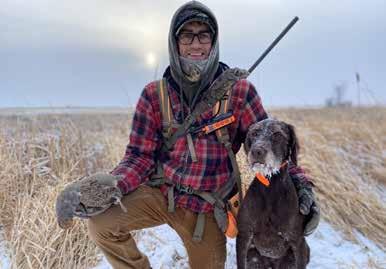
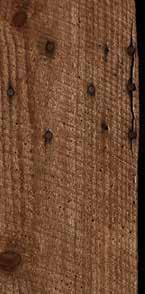










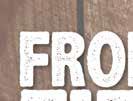





















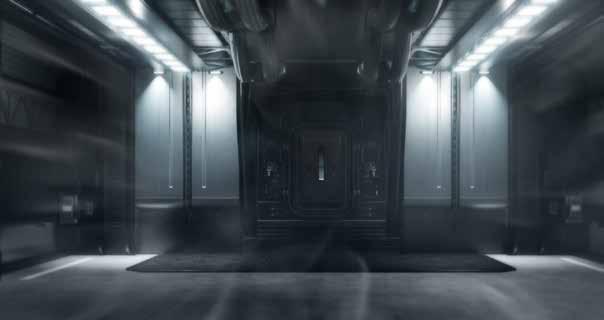

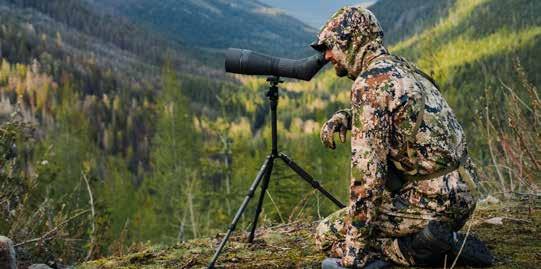
THE BEST IN VERSATILE WIND PROTECTION JUST GOT BETTER The gear that first put us out in front is doing it again with this evolution of the Jetstream. Known for the best wind protection, it’s now even quieter and more comfortable. Versatility increases with the widest variety of patterns and colors we’ve ever made. And women’s and men’s cuts fit and move even better. Every limitation engineered away, it’ll no doubt become your go-to jacket or vest everywhere from the trailhead to the treestand to the marsh.

The reflections of black tree trunks bent across the water, contorting as ripples interrupted their stationary images.
We couldn’t see the boots of our waders as we walked through shin-deep dark water. The forest was grey, cloaked under a blanket of fog. It was thick, and only silhouettes could be discerned from 100 feet away. We occasionally tapped our feet along the bottom to test for the edge of what was supposed to be a dirt road – and anxiously guessed what else we were bumping into along the way.
The rains were relentless that month in East Texas, and water levels were far above their typical high-water mark in March. Levies were unable to hold another drop, and the whole basin flooded. Conditions were highly unusual and gave way to rare hunting possibilities.
The flooding had submerged thousands of acres of forest several feet under water – and only a couple of dozen islands remained dry where the topography was just out of the flood zone’s reach.
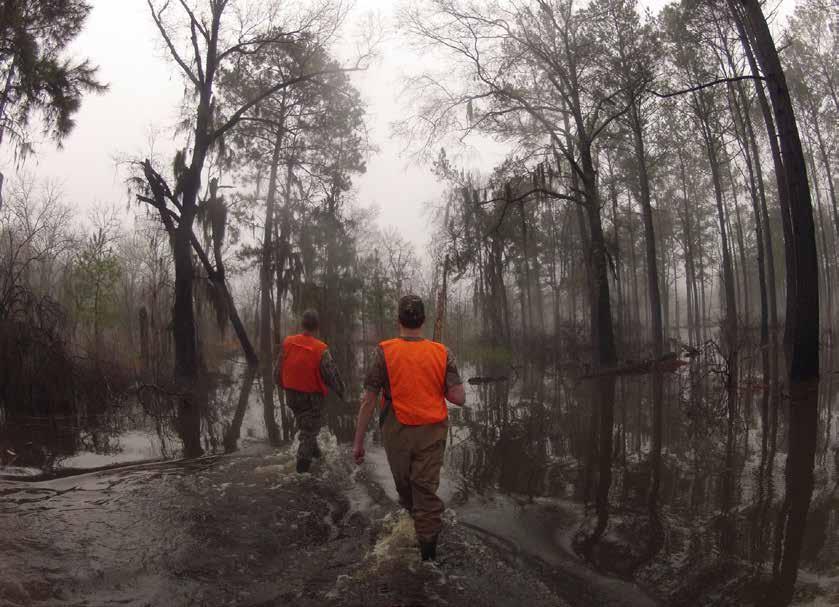
Hardwood thickets of oak, maple and walnut interlaced with cypress swamp in what became one continuous, flooded basin. We reasoned that wild hogs, which were typically spread out in locations unknown, would have no option but to move to the last isolated
pockets of dry ground that dotted the area. Those same places were also completely isolated from other hunters – unless they wanted to wade or paddle through a maze of complex waterways.
Two friends, Corey and Matt, passed along the opposite edge of the road while I watched for animal movement in the stand of trees along their flank. We made our way past an oil pad, while the pump bobbed up and down amid a lake of dark water. The rusted steel resembled abandoned mining machinery, and it hummed like a sick dog through the fog. The sounds slowly dissipated as we moved deeper into swampland. Wood duck cries broke up the silence as we pushed into more remote nooks and crannies of the woods.
I looked over to see a cluster of fire ants floating like a red raft at the surface of the water, as if they were riding a thin layer of oil. Small segments of several dozen ants broke off from the main group, forming what looked like raspberries – only each segment of the berry was an individual living ant.
When we waded deep enough, my fingertips would sometimes brush through the water. At times, the stinging sensation of nettles would cause us to strain and look down. The pain was dozens of ants that clung to a misplaced swaying hand.
I glanced into the water and wondered if the floods had forced alligators to start moving from their dens. It seemed reasonable that
they would have to move to get oxygen. The area was known to have large gators, and the thought of wading around all day with them on the move made me stop to think. Even a full grown, 12- to 14foot gator could glide along the swamp floor as quiet as a grizzly in a meadow. Fortunately for us, the weather was still cool, as it was mid-March, and gator activity was probably low.
Detailed topo maps were crucial for determining which areas might still have dry land. There is very little change in topography in the East Texas bottomland forests and cypress bogs, but we noticed a few topo lines that indicated small knobs, five to 10 feet higher than the surrounding land. From there, we selected bearings of travel and started to scout them out systematically.
We went east, and when we couldn’t make sense of directions amid the fog, we pushed further until landmarks materialized. After wading a half mile, we found only specks of land untouched by water, barely large enough to harbor a couple of rabbits. As we approached the edges of permanent cypress swamp, the water rose to the level of our chests. We soon realized we would have to paddle our way into deeper sections of the forest.
Circling back to camp, we dropped a 16-foot Old Town canoe into the water. There were a couple of small islands that couldn’t be accessed on foot, and we prepared for a long day’s paddle.
The deeper sections of swamp were enclosed by cypress canopy, and twisted branches reached out and grasped one another, creating arches over each navigable path. Huge mats of mint-colored moss draped like the hair of mammoths. Giant salvinia encompassed massive sections of water. Spooked wood ducks let out shrill cries before their black silhouettes disappeared into fog.
As we paddled our way through a section of water completely overrun with logs, we noticed something out of place – a black and brown mottled snake with a diamond shaped head and black eyes, a cottonmouth. We paddled closer because of our familiarity with venomous snakes through wildlife research in graduate school. The snake was almost unable to move because of the cold weather. I slipped the blade of the canoe paddle underneath it and lifted it closer to investigate but kept it outside of striking range. The snake sat quietly while we studied the banding patterns and angular shape of the head, before I dipped it back into the flooded forest.
We had no prior knowledge of the land and had to trust that our map skills would lead us to hidden pockets of dry ground. Eventually, after paddling a labyrinth of flooded timber, we could see the tops of pine trees stretched out above the cypress canopy, indicating there was higher, and potentially drier, ground.
We slid the canoe up along a muddy bank and began to explore the first island. It was a quarter-mile wide, and we split up to cover more ground. The soil was completely rooted up in all directions and exposed organic matter made it seem as if someone had taken a pickaxe to random locations. It was clear that wild hogs were in the area recently. There had to have been a large group on the island within the last few days, but we had no way of knowing if they were still there.
I walked along the edge of the water, noticing changes in track size and frequency. I tried to simultaneously study the forest for any movement out in front, but the thick fog made it difficult. I followed a finger of the island that stretched out to a narrow point, and a coyote exploded from the underbrush, running past my left side, less than 15 feet away. The coyote had been caught between me and the water. It was evidence that our tactic might work on hogs
as well. But, after circling the island and backtracking to meet the other guys, nobody had seen any other animals.
We climbed back in the canoe and paddled north toward another likely hidden patch of dry ground, exploring a small strip along the way and spooking a group of deer, which bounded across the flooded swamp without breaking stride. They disappeared like mosquitos into smoke, and the sounds of their footsteps never reached our ears.
After paddling a few miles and walking through the mud and pine needles of several patches of ground, we searched another island. We maneuvered around a log jam and pulled the canoe up to shore. Fresh hog sign was visible along the bank. Corey and I went in the only direction we could along a narrow strip of walkable terrain through this smaller island, only 100 meters wide.
Coming to a tangled patch of briers, 15 feet high, we heard splashes on the opposite side.
Corey circled to the right, and I circled left. As I came around the brush, wild hogs were everywhere. They sprinted through the shallow water only 15 yards away. Corey fired and I followed with a shot. After the shots rang out, we watched the group of hogs swim rapidly into the gray of the flooded forest. A single hog lay floating on the surface of the swamp. Ripples from the pigs’ departure sloshed into the buttresses of cypress, and I watched as the rest of the hogs disappeared.
I waded out and pushed through floating logs, then pulled the hog to shore where we rested a moment before carrying it 200 yards through a mix of briers and mud to the canoe. Late afternoon dictated we start our two-mile paddle back to camp. After a few miscalculations on navigating the cypress forest, we arrived an hour before sunset.
Corey and Matt prepared the camp and barbeque for dinner, while I butchered and skinned the pig along the edge of the swamp
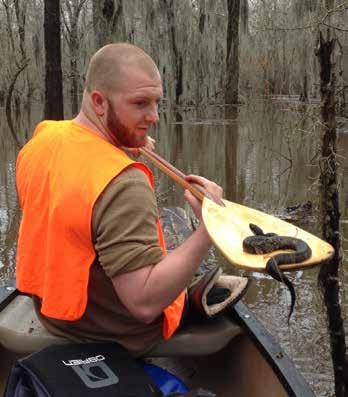
under a group of cypress trees. I removed the skin first, then slowly worked my way around and quartered it, trying to keep the dirt from clinging to the flesh. I trimmed away the backstraps and tenderloins, gave them a brief rinse and handed them to Corey. They were seasoned and on the barbeque before I was finished butchering the rest of the hog. I cut the ribs and meat trimmings away from the rest of the body and sat for a second to rest, overlooking the swamp in the last bit of daylight.
Circled around the fire, we sliced cuts off the wild pork, as sparks crackled off into a dark canopy of the cypress wilderness.
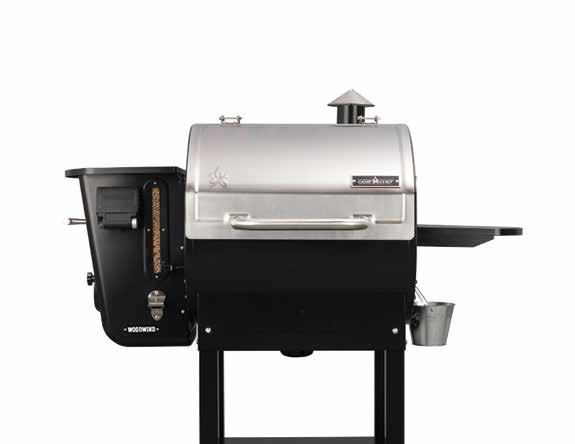



BHA member Kyle Shaney is a lifelong outdoorsman and explorer of wild lands, and an assistant professor of wildlife ecology and conservation in the Department of Biological and Health Sciences at Texas A&M University-Kingsville.
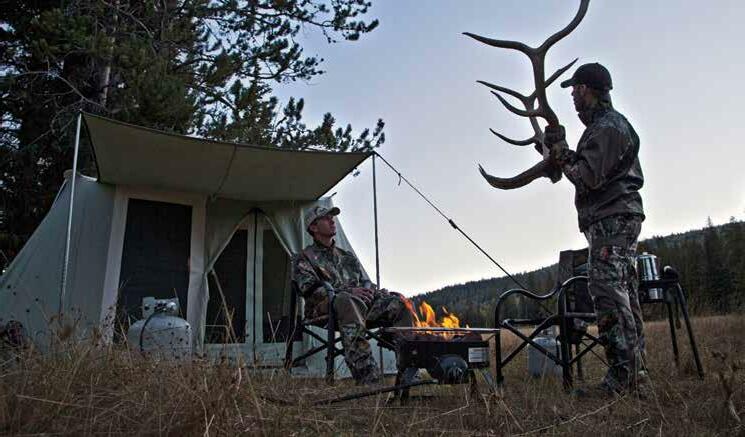

Our shared land. Our responsibility.
We at BHA are at the end of the two year, Phase 1, of Project Aspen, our newly established endowment. We were awarded $350,000, but it requires matching funds to realize the awarded money. We need your help: With just weeks left to go we are almost there!
Every dollar you invest in Backcountry Hunters & Anglers today is immediately doubled. We put to work $2 for every $1 you invest, and these funds will advance our mission in perpetuity.
Our endowment will be a sustainable source of funding for BHA’s work on behalf of all we care about so deeply. It will fuel and empower this and future generations to continue what we have started.


Please consider donating today and include Project Aspen in your year-end giving.
We have until Dec. 15 to create the foundation of a lasting legacy for our work. Every dollar matters.
The future work for our wild public lands, waters and wildlife needs your investment now.
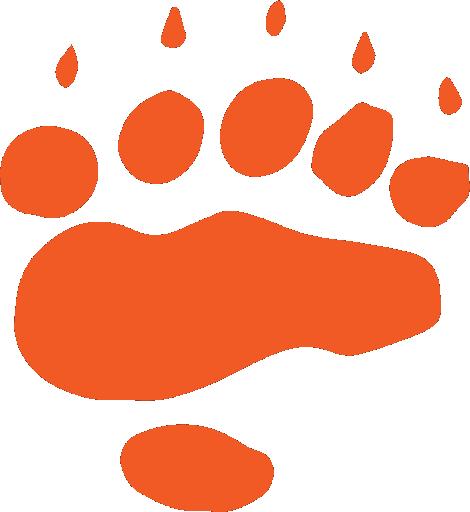
For some of us, fishing isn’t just about how many or how big— and it’s not about nailing the photo. It’s about the the struggle, the work, those hard and hilarious moments that fuel our tailgate tales. It’s about the adventure. NRS Fishing helps you catch it with rugged, functional equipment and apparel built for fishing the waters less traveled.

I mourn memories that I know exist, but whose recollection is lost to me. Evidenced by the existence of only a few fond childhood memories, I ascertain there must be more.

Some memories, however insignificant, are forever woven into the fabric of our psyches and their detail does not dwindle with the passing of time. For me, those are often illustrated by pictures of waiting for an upland bird to bust from ground cover, a migrating goose dipping just low enough for a clear shot after exiting a cornfield or a pair of doves coming in close enough for me to fire off a meaningful shot.
In this moment, I was about 8 or 9. I know this because this particular memory excludes the .410 shotgun that I opened with great expectations on the Christmas of my 11th year.
I sit harvesting blades of the tall, surrounding grass and twisting them carefully into long, tight braids – only to toss away the hastily created works of art as boredom ushered me on to another meaningless task. Thus is the insignificant beauty of waiting for the fluttering of wings. My dad is next to me, sitting on one of the now-common plastic five-gallon buckets with the camouflaged padded lid. The result is a comfortable stoop for a 50-year-old father anticipating a pair of doves – as well as a place to store them until they found themselves under the care of my mother and her castiron pan.
A better hunting companion than me sits at my father’s left, as he was a left-handed shooter. Her thick black coat shimmers in the orange remnants of a sun not quite ready to dive toward the horizon but understanding the nonnegotiable aspect of its duty.
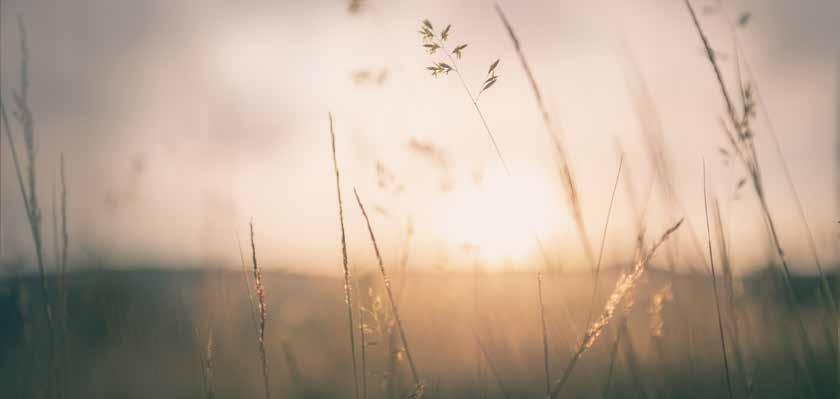
We hear the doves before we see them. The sound of the pair, that guttural announcement of an impending fly-by, is first evidenced by the slight upward movement of our Lab’s ears. Her bottomless brown eyes shift with concern; it was time to complete the task that nature and DNA required of her.
Not to be handicapped by the obvious limitations of a singleshot 16-gauge, my father holds a second cartridge loosely between the meaty part of his pointer finger and the perpetually bloodied knuckle of his middle finger. A well-aimed first shot yields an ejection of the casing and a quick transition of the new shell from the cradle of his right hand. The reconnection of the break-down barrel and the downing of the second dove occurs quickly and unceremoniously.
My father’s facial features juxtapose the businesslike attitude of our Lab as she heeds the hunter’s commands and bounds after the fallen pair.
Only after dinner and the slow retreat of the brown liquor in my father’s glass does a recitation of the hunt begin. The twinkle of his bluish-gray eyes brings a curious credibility to the slightly enhanced retelling of the skillful second shot. He shifts in the leather chair, abandons his drink and answers the call of the woodstove to add another log of seasoned cherry.
I close my eyes, squeezing them tightly as if to mechanically fasten the memories of this day so as to never lose sight of them, not knowing why. But today, at a more advanced age, I appreciate my forethought.
BHA member A.R. Thompson grew up hunting, crabbing and fishing around the Chesapeake Bay. He currently resides in Chester County, Pennsylvania, with his wife and three children.



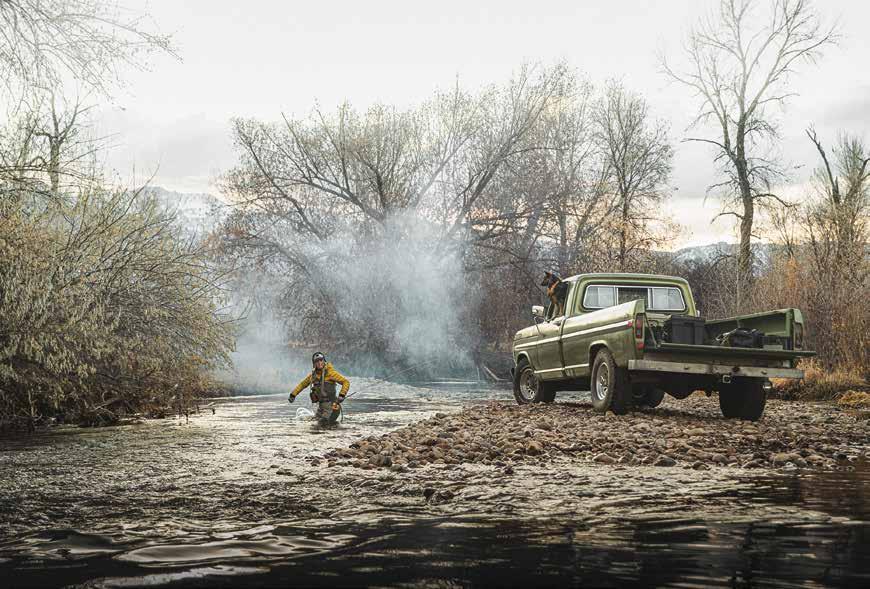


We turn off California’s State Route 62 and head south.
A shot-up sign tells us the BLM acreage we’re on used to be a part of Joshua Tree National Monument, which was designated in the 1930s by President Franklin D. Roosevelt. In the 1950s, President Truman reduced the monument so that it could be mined.
I stare across the desert and see only creosote. I immediately know there are little to no birds here. There is no water.
“But we are going to a wash,” Frank tells me. “We could find a spring where the quail are.”
It’s a few days before Christmas, and while it’s cold enough I’m wearing a jacket, I can’t help but think about the last time I hiked near Route 62, maybe 20 miles east from where we are now. It was late May, high 90s, nothing but creosote stretching in every direction. The sun beat down.

Despite the sun umbrella I carried, the sun hoodie I wore and the hat and dark glasses shielding my face, I realized I was moments from full-blown panic. There was no escape from the sun. A crushing claustrophobia settled over me. This was a place I could not stay. If I were here long enough, the desert would kill me. There was no “if” in that realization. It was a matter of when.
Now, though, the sun is absent. Gray clouds line the sky. The light is flat. I know the lack of sunlight is an exception, not the norm. The wind whips as we park at a concrete slab that looks to have once been a bathroom for a nearby mine. Shards of broken porcelain, brown cans, twisted nails, rusted spark plugs and a box spring or spring to an old car seat all twist down the hill next to the slab.
We load our shotguns. There is no water here. There are no birds here. I know this. Frank knows this, but we are here, doing our best to quail hunt in the deserts of California.
“You have a plan for that jacket?” Frank asks. “You’ll get hot.”
That might be true, but I’m cold now, so I tell him I’ll put it in the bird pocket of my vest. He looks at me sadly. I know he’s about to tell me I can’t lose hope we’ll see the birds, but he says nothing. We walk into the wash.
I last longer in the jacket than I expect. Ten minutes in, I stop, stuff it into the vest pocket and put the vest back on over my CamelBak. The vest is tight, thanks to the water – and the jacket. Of course, it’s a youth vest, but if you want something fit for a woman in hunting, it’s either complete crap or pink. The stuff for 12-yearold boys, though, that’s functional. Unfortunately, if I’ve got water and more than a T-shirt on, the vest fits like a corset. Depending on the day, this can piss me off, but I decide not to think about it now. Frank and I spread out. He finds a mylar balloon.
“I’ve got one,” he calls.
Desert tortoise apparently eat mylar balloons thinking they are water. Then they die. We pick up every mylar balloon we find. There are a lot of them in the desert.
Out of the two of us, I am the better forager; Frank is the better hunter. I find three mylar balloons in the next 20 minutes. One of them is still airtight. I push it against a bush that is made of thorns. It pops, and I stuff it into my corset.
Frank tells me that to be successful in hunting you must constantly battle your self-doubt. You can’t let the doubt beat you, which is more embarrassing than the quail dodging every one of your pellets.
Today, though, there is no doubt about the birds. I know there are no birds. I only know this, though, because of the time I’ve spent hunting quail. That’s the thing about hunting. It lets you interact with the land in a way you can’t when you’re hiking without a shotgun.
As we walk, I pay attention. I see rain prints, literal rain prints, in the sand of the wash, but no quail tracks. The wash is greener than the surrounding desert, but only because the occasional cat’s claw is growing there. I see what looks to be a lost cactus wren, but nothing else moves. I see a dead cholla, and it’s confirmed. If I’m where cactus can’t grow, I’m where no quail can drink. There are no noises beyond the crunching of our boots and the mylar in my vest. No bird calls, no rustling, nothing. Frank and I don’t talk.
Not that I’m annoyed though. There is something about hunting that pulls out the details from the land around you. While I see no footprints of any kind – human or otherwise – I search for pottery
Perrin Pringshards. None of those either. I consider the rocks in the wash. They are of all colors – olive green, blistering white, mahogany and orange.
I look up, knowing I’ll see them, and I do – tailing piles, the posts from long lost claims. This land is peppered with mines.
People had been all over this landscape, but not in a very long time. I wonder about the men who were here, chipping away at this blasted landscape, hoping to strike it rich. Then I see what looks to be a cluster of barrel cactus. I walk to them excitedly. I see they are long dead. All that remains are their spines, like someone papermached over balloons.
“There’s a canyon over here,” Frank says, looking at his phone. “It’ll make our walk back more athletic, but I think it’s worth it.”
Frank is a master sandbagger, but I say nothing and follow. I end up on a flat expanse made of dark rocks with a reddish hue. If I were in the kind of place where things were named, someone would have called this “The Devil’s Dance Floor.”
We crest a hill and the largest ocotillo I’ve ever seen comes into view. It takes me a minute to realize I must be in the Sonoran Desert, not the Mojave. More importantly, any water in this area is going to that proud plant and not to any quail.
We walk past the terrifying pit next to a post labeled the “Poor Devil” mine. I smile, knowing I wasn’t too far off with my name assumptions.
The canyon we enter is the kind of place a stagecoach could have navigated – and would have been ambushed. I tell Frank, walking
with shotguns here makes me feel like I’m in the Old West. Frank considers telling me we could still see birds, but doesn’t.
The athletic part of our hunt isn’t too bad. We pick our way up a loose slope. Compared to the other stuff I’ve navigated while hunting with Frank, it’s easy. At the rim of the canyon, we can look across the desert and see our truck, a dot in the distance.
“It’s only a mile or so away,” Frank offers.
“If you walk in a straight line,” I think.
As we make our way up the final incline to the truck, I think about creatures I saw today – the possible cactus wren, a cottontail, a dead beetle, a hummingbird hanging out with a sparrow and a pile of ants. No quail.
We get into the truck.
“Well, this isn’t North Dakota,” Frank says.
I consider the crumbling mountains, the creosote, the historic mining trash and the forgotten feeling of the land.

It certainly is not North Dakota. What this place is, I’m not entirely sure.
BHA member Perrin Pring is an master of fine arts candidate at the University of California, Riverside Palm Desert. When not writing, she enjoys bird hunting, dehydrating food and reading horror novels.
A hybrid fixed blade with a fine, smooth edge to trim, debone, or slice your preferred cuts of meat. The Meatcrafter® features Benchmade’s proprietary 14˚ SelectEdge® technology and provides the perfect balance of a fine grain, sharp edge with carefully engineered blade flex.
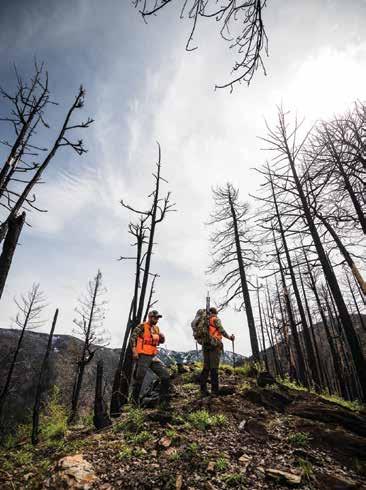







It was late November and one of the last weekends to make the trek to Bear Pond before the road closed for the winter.
I asked a few friends to join me – and the consensus was that I was wasting my time and quite possibly mad. It seemed as though I would have to attempt this one solo, until my buddy Byron called me at 7 p.m. on Saturday night and agreed to join me in the morning.
We had both hunted deer for the last four weekends and loved the sport and the challenge, but we needed a break. Chasing deer on public lands that are close to a major city is frustrating at times, to say the least. While the masses were chasing whitetails, we were after a different public land excursion – hard-water angling for tiger trout.
In Alberta, we are blessed with plentiful outdoor recreation. Big game tags are abundant and readily available – and our fishing opportunities are wide-ranging and accessible. To top it off, 60% of Alberta is designated as public land.
One of the recent additions to the province’s angling opportunities has been an attempt to stock several alpine lakes with tiger trout – a sterile crossbreed of a brook trout and a brown trout. It gives the hybrid fish a light golden color and an eye-catching striped pattern. After a failed attempt to catch one of these beauties in the summer, it was time to try my luck at catching one in the late autumn as the mercury dropped.
Byron and I made the hour-long drive to the trailhead and, as expected, we were greeted with an empty parking lot. We were busy readying our gear when a three-generation family of like-minded fishermen pulled in.
Maybe I wasn’t mad after all, or we were all mad but were mad together, which made me feel a lot better.
I remained confused as to why I hadn’t received more positive responses from my invites. “Hey, do you want to hike to a lake that may or may not be frozen and may or may not have fish? It will be cold, but at least it will also be windy.”
After exchanging civilities with the grandfather-father-son trio, we turned our boots towards the trail and put one foot in front of the other. The wind blew fiercely, and I began to see why people weren’t lining up to join us. We had no idea about the condition of the lake. I wouldn’t have been surprised if we found open water. It had been a mild autumn in southern Alberta.
The hike was short but steep, hardly a challenge for our seasoned, backcountry hiking legs – even if we were sporting a bucket of tiny rods and a hand auger to boot.
Dense timber surrounded the lake. My eyes stung from the wind. As I peered at the lake through the trees, I couldn’t tell if it was frozen or not. Weaving through the lodgepole pines to the lake, my eyes found their focus, and it became clear that we were dealing with hard water.

How thick was it though? We drilled a hole a few feet out, where we knew the water was shallow, and found nine inches of ice. “I could’ve driven my truck on this!” I joked to Byron.
We fired a few more holes to check the depth of the water and set ourselves up in a spot we thought would be productive. Knowing very little about this lake and species, this guess was as good as any.
The wind kicked up a notch as we dropped our lines. Suddenly, a colossal gust blew half of our gear across the ice and back to the shore. Lesson learned. I put my backpack on, and Byron weighed
down his five-gallon pail with a rock. He brought along his Bluetooth sonar and used it in the holes we drilled to check for activity – nothing.
We worked our way around the lake, slowly proving the naysayers right while wondering if this was a wasted journey. It was quiet – no marks on the sonar, no bites, no signs of life. When we reached the other end of the lake, we were relieved to find that it was sheltered from the wind and offered a striking view of the mountains opposite. “We can try here for a bit then head home,” Byron said.
I agreed. I am not usually one to shy away from discomfort, but the lack of bites had me ready to call it a day. We drilled holes in about five feet of water and stood there carelessly jigging our lures and chatting.
After about five minutes I felt the unmistakable tug of my line. “Whoa!” I shouted. “It probably just caught on the side of the hole.”
Bam! Another hit.
No denying it now. With a short, sharp stroke I set the hook and reeled the fish up a short distance to our terrestrial world. There it was in front of me – a real-life tiger trout.
As every angler knows, a single fish can turn the whole day around. It isn’t about having something to eat for dinner or breaking a provincial record – you want to prove something can be done. This guy was two centimeters short of the size limit, so back down the hole he went.
Any size fish gives a bit of wind to one’s sails, and this guy was no exception. The fact that we stood on public land, on a lake we didn’t know would be frozen and possibly didn’t have any fish in it, was as good as it got for me. At least it was for the next two minutes, before I had another hit and pulled out a 36-centimeter trout. “You’re going in the pot, my hybrid friend.”
It may not have been 40 pounds of venison for the freezer or a monster rack to hang on the wall, but it was a win we both needed. With five weekends of big game season, the pressure to fill a tag can mount on a novice hunter. Taking time to chase stocked trout and enjoy Alberta’s public lands was a great opportunity to put things in perspective.
Bagging an animal is the goal, but losing focus on the experience itself can make an enjoyable pastime become a chore. Realizing, instead, that it is about the adventure and scenery, connection with nature and growth as an outdoorsperson –now that is a far more worthwhile perspective to have. After all, there’s always next year.
BHA member Max Dickinson is a self-confessed, quasi-newbie, adult-onset DIY hunter and angler from Southwest England. He now lives in Calgary, Alberta, with his wife and their dog, where he enjoys chasing a wide variety of game animals and sport fish.






I have access to a technology that increases my chances of retriev ing wounded game. When considering hunting ethics and advance ments in technology, I tend to evaluate game retrieval technology differently. Is that fair? Or should it be held to the same standards as hunting technology?
What if I told you that this technology is “Pancho the Won der Dog,” a Decker rat terrier with a nose for recovering wounded game? Pancho and his canine compadres have 50 times more olfac tory receptors in their noses than we have, which makes their sense of smell one thousand to ten thousand times better than ours.

Dogs can detect substances at concentrations of one part per trillion, making them effective for sniffing out bombs, drugs, lost people, diseases and wounded game. They have a specialized Jacob son’s organ, with nerves leading straight to the brain. This organ re sponds to unusual smells, including some that have no odor!
Our noses work like a single-track trail – inhaled and exhaled air follow the same path. As a result, we can only smell when we inhale. Dog noses work like an interstate highway – as though inhaled air uses the southbound lanes and exhaled air the northbound lanes. This allows dogs to incessantly detect scent. To top it off, their mi raculous olfactory devices tell which nostril brings in more scent. That’s why you’ll see dogs zigzagging across a field, pinpointing an invisible scent trail.
Coupling scent-tracking dogs with human trackers (who leverage the primary sense of sight) creates a cutting-edge instrument capa ble of finding gut-shot animals, ones that are fatally wounded and leave little blood. This task is often very difficult and unsuccessful without a dog.
Most tracking teams are a product of teamwork and training. The training is mostly for the tracker – although, the dog benefits from practice blood trails too. Trackers must learn how to trust and read our dogs. The best training is time in the field. I often say, “Pancho does the work. I am just smart enough to walk behind him.”
Perhaps you’re thinking, “This is interesting, but I’m not con vinced a dog can be considered technology.” Or, perchance you’re OK with this type of all-natural, free-range tech?
Today, using dogs to ethically recover big game is legal in 43 states. With tracking dogs becoming more accessible, how does that change our responsibilities to recover wounded animals?
In the most significant ways, it doesn’t change our responsibility
You still need to make a good shot. Game recovery dogs are just that – they track and recover fatally wounded game. They can’t compensate for buck fever, poor shot placement or shots taken outside of your effective range.
You still need to follow up on every shot using the best game retrieval practices. Slow down, reflect and be observant. Good game recovery skills aid you in recovering your animal and will help the dog, if you call a tracking team later.
3. All hunting regulations still apply. Tracking teams cannot tres pass, for example.
4. You still need a cool head, positive attitude and resilient mind set. Dogs can smell undetectable odors. This includes things like anger, fear and stress. Tracking dogs want to recover your animal more than you do. They work hard, giving your animal complete dedication. For many reasons, they may not find it. If they don’t, don’t take your frustration or disappointment out on the dog.
While your responsibilities don’t change much, there are a few special considerations for using tracking teams. In the event you come to a dead end or consider calling a professional tracking team, stop searching.
The wider you and your hunting partners disperse the scent, the more difficult it is for a dog to help. Take photos at the hit site of your arrow and any hair, bone, blood or other fluids. Your tracker may ask you to text photos to help formulate a strategy.
In many ways, game recovery defines hunting. You don’t have a responsibility to go into the woods, to release an arrow, or squeeze a trigger. Once you do, however, recovery is your responsibility.
The dilemma I’ll leave you with is this – tracking teams are be coming more accessible. However, for a variety of reasons, they may not be available at a given time. Where they are available and you are unable to find the animal you’ve fatally wounded, do you have an ethical responsibility to call a tracking team?
To learn the regulations in your state or to find a tracking team, go to the United Blood Trackers website at unitedbloodtrackers.org
Patt Dorsey is a life member of BHA, on the board of Orion and a former Colorado Hunter Education administrator. She and Pan cho are members of United Blood Trackers and Rocky Mountain Big Game Recovery. They live in the San Juan Mountains in southwest Colorado.
This department is brought to you by Orion - The Hunter’s Institute, a nonprofit and BHA partner dedicated to advancing hunting ethics and wildlife conservation.

In Sweden, caribou are called reindeer. The Swedish reindeer are not considered wild. The Sami people will herd and follow the deer migration, then in the spring, the herds will be gathered, and some animals will be separated for slaughter. Some of the meat will be dried and used by the Sami or sold commercially.
Salted and dried reindeer meat, torkat kött, is a traditional deli cacy from Sweden. It is simple to make and tastes amazing. While I don’t have access to reindeer here in Montana, you can get very close to the original with venison. The finished result showcases the meat in all its natural flavors, only enhanced by salt and, if you so choose, by smoke.
Here you can read the traditional and my modern take on this world-class jerky.
Historically, the Sami people who live in the northern region of Sweden would slaughter reindeer in December, – when animals have more fat reserves. In more recent times, the traditions have changed, and the reindeer slaughter happens as early as September. The Sami people hang the animals to age before the meat is salted. This way, you get a more tender result than if you salt the meat immediately.
After the slaughter and the meat has matured through aging, the meat is salted, layered and packed in barrels. Reindeer fat is laid on top of the meat to protect it from damaging air, and the barrels will be sealed shut. The barrel-packed meat will rest for several months until the harsh winter yields to the cool and windy April weather.
The meat will be cold smoked and dried. The wood used for smoking will be sälg (a type of willow) or birch and juniper (Juniperus communis). The meat is cold smoked for 1-2 days and then hung to dry. The drying happens outside. The more natural
airflow, the better. As the meat dries, the water content will evaporate while all the minerals and natural flavors will remain. Thicker pieces are commonly stretched out with wood sticks to speed up the process.
The cold April winds will help create a pellicle, a hard surface that protects the meat from early flies and bacterial degradation. The meat is finished drying when it feels right to the touch – dry but not too hard. The drying time takes a few weeks.
The shelf-stable dried meat is used as a snack and for cooking.
The traditional way of the Sami would use an estimated 1.8% salt. The salt percentage is calculated with the weight of the bones and the meat. With the removal of bones, I have found that 2.25% salt content gives a result that is just slightly saltier than the original and closer to my preference. My preferred cut for torkat kött is the whitetail or mule deer top round or bottom round.
• Trimmed, lean cuts of venison. A top round or bottom round would be great choices

• 2.25% kosher salt (or any non-iodized salt)
• A vacuum sealer with bags
• Pellets or sawdust for smoking
• Butcher’s twine
• A designated cold smoker (If you don’t have a cold smoker, you can easily create one, as pictured on the next page)
Kjell HedströmYou can easily make a temporary cold smoker in just a few minutes. Take a leftover cardboard box, drill some air holes, two opposite facing holes for the meat hanging pole, add a hole for the chimney, and hang the meat over the smoldering apple pellets.


1. Weigh the meat after trimming away the silverskin and fat.
2. Measure 2.25% non-iodide salt, based on the gram weight of the meat. (It doesn’t matter what pure salt you use. Rock salt, kosher salt and pickling salt are different volume-wise but give identical saltiness to meat weight-wise.)
3. Rub the salt into the meat and package it into vacuum bags. Add leftover salt into the bag and vacuum seal it.
4. Leave the bag at fridge temperature for at least four weeks per inch of thickness and up to several months. The Sami leave their meat for 5-6 months, so don’t rush this. During this equilibrium salt phase, the salt will penetrate the meat and will continue to break down muscle fibers and enable more flavors.
5. Once the salting equilibrium phase is completed, you should weigh the meat. While you can go “by touch” to know if the meat is done, I recommend beginners go by the numbers. Weigh each piece of meat in grams, write it down on paper and attach the paper with butcher’s twine to the meat.
6. Cold smoking is next. The meat is hung by hooks or butcher’s twine and is cold smoked for 12-14 hours. I wait with cold smoking until the ambient temperature is around 32-40 F. Don’t worry if you don’t have a fancy cold smoker. Like in the picture, a functioning cold smoker can be made for practically no money at all and in just a few minutes.
7. The drying should take place in temperatures from 32-50 F with airflow around the meat. A cold, unfinished basement where you let in fresh air now and then could work. A fridge could work if you can hang the meat; the downside is that the fridge will smell of smoke. A cold garage could also work, especially if you air it out now and then. Stay away from locations with scents and smells of their own as they might impart this flavor on the meat.
8. If you can hang it outside, with natural airflow and protection from precipitation, you will be closer to the original method. Don’t worry if you hit a cold spell, as it will only slow down the drying process. Here in Montana, the end of February to the end of March will often have the perfect temperature for drying meat. If birds or squirrels are a concern, then some thin
mesh chicken wire can be used as a protective barrier.
9. Whatever you do, don’t use your dehydrator. Drying the meat in cool temperatures gives a result that is completely different from drying the meat in a warm temperature.
10. The drying is completed once you have reached 35-45% weight loss. It can take up to six weeks, depending on the thickness of the meat, humidity, temperature and airflow. My recommendation is to go for 39-40% weight loss. Make a mental note of how the dried meat feels if you prefer to go “by touch” in the future.
11. In the rare case of white mold forming, don’t worry: Any white mold forming can be wiped away with water and vinegar.
12. Sample the meat once it’s finished drying. Make sure to write down what you thought of the smokiness and salt level, in case you want to do modifications for the future.
13. Optional: The torkat kött will continue to improve, age and water equalize if you vacuum pack it after drying and leave it at fridge temperature for at least one more month.

Torkat kött is great as a hunter’s snack or couple with a robust wine as an appetizer at a fancy dinner. The kött should be enjoyed in thin slices to last you the longest.
BHA member Kjell Hedström is a hunter and a DIY meat processing and aging ambassador. In addition to his role as VP of engineering at Ganaz, Kjell runs TasteOfTheWoods.com promoting awareness of improved meat aging practices and wild game delicacies.
Find more wild game recipes on BHA’s Field to Table blog at backcountryhunters.org/field_ to_table
We are the next generation of conservation leaders.
I cannot count how many times I have asked an infantry lieutenant or captain, “Where you at?” They would pull out their map and point. Some knew where they were, some did not.
Those days are long gone for me. I spend my time now in a different fight, with a new group of leaders: the fight to defend and enhance public hunting and fishing opportunities. Yet, I find myself thinking back to old times; I found myself wanting to ask a new group of BHA leaders, “Where you at?”
Efforts are underway all over North America that would eliminate hunting and reduce access to fishing. No longer are just the larger, well-funded opposition forces employing these tactics –it is all those profiteers who stand to gain from the loss of America’s unique heritage of hunting and angling. Some want to divest us of our public lands and waters by selling them to the highest bidder or giving them away altogether. Many of those same people want to enrich themselves by using our landlocked public lands for private venture. We’re seeing more sinister tactics to dismantle the heart of the North American Model – the Public Trust Doctrine, which is a core tenet stipulating that our wildlife resources be managed in trust for the public.
The fact that we are in a fight is not news, but the emergence in recent years of this concerted effort is new. We are seeing increasing efforts to systematically dismantle our hunting heritage in every corner of North America using the same three step process: (1) They attempt to influence our wildlife management agencies. (2) When these attempts fail, they pivot to state legislators. (3) When they fail to influence our elected officials, they go directly to the voters with ballot initiatives designed to intentionally mislead the public.
BHA President and CEO Land Tawney likes to remind us that
BHA is a grassroots organization that is fueled by the time, talent and treasure of our members. In order to accomplish our mission in today’s environment, I would argue that each and every member must do a little more. We must share a little more of our time, talent and treasure.
So, I am asking the next generation of leaders, “Where are you at?” Many of you are already doing everything you can – thank you. For those who might just be diligently paying your dues or promoting the brand, I would like to challenge you to join me in doing more by giving your treasure.
We must better harness the power of the entire membership. If every member gave just $5, we would meet our Project Aspen endowment investment matching funds goal of $350,000, which will result in $700,000 to support our work in perpetuity. Additionally, become a sustaining member by signing up to donate monthly at whatever amount fits, $10, $50, $100.


You might be time constrained, money constrained, or talent constrained. I got it. But small things add up to grand things. My “ask” is small and simple at the individual level, but in total could be exactly what we need right now in this fight – to win this fight.
Where you at?
Col. Mike Abell is a founding member of the Kentucky chapter of BHA and served as their first vice chairman. He now serves as statewide event coordinator. He served 26 years in the Army and Army National Guard as an infantry officer. He has been married to BHA life member Aline Abell for almost 30 years.
Support Project Aspen at backcountryhunters.org/projectaspen
The Campfire Circle is a group of dedicated advocates, like you, who choose to donate $1,000 or more per year to ensure that BHA’s campaigns, advocacy and on the ground efforts on behalf of our wild public lands, waters and wildlife are sustained. Support from the Campfire Circle (formerly known as Legacy Partners) is crucial to the mission of BHA.

Dana Kim Colton and Maria King
Jonathan Klein
Ted Koch
Erik Koczorowski
Ed Bangs
Michael Barcone
Harris Bedford
Owen Bedford
Carl Besetzny
Matthew Blint
Michael Braught
David Brown
Richard Brown
Ben Bulis
Tod Byers
Ryan Callaghan
Scott Callaghan
Tom Carney
Kenton Carruth
Wally Chapman Scott Cook
Chris and Margaret Davis
Todd DeBonis
Katie DeLorenzo
Jeffrey Patrick Dennis Erik Dippold Lorca Divale
Gar Duke
Dan Edwards
Scott Engelstad Richard Farris
James Gilsdorf Bart Gliatta Richard Glover II Stephen Graf Jordan Gross Elizabeth
Jeffrey Hancock Bill Hanlon James Harrington Christopher Hennessey Hal Herring Brian Hoang Nate Hollingsworth Jonathan Holton Alex Howe Caleb Hughes Hilary Hutcheson
Jonathan Ingram Christopher Jenkins Nathan Johnson Jeffrey Jones Edward Jones Thom Jorgensen Richard Kacin Heather Kelly
Greg Kvale
Kai Lampson
Jon Lang Stephen Lang Nelson Layman
Anthony Licata Guy Litt Matt Little
Ben Long Josh Long Peter Lupsha
Thomas Lynch
Joe Macera
Jody Marler Mark Mattaini George McCloskey Tom McGraw
Robert Mechling
Andrew Miller
Trevor Morris Jonathan Mueller Dennis Muirhead Scott Mylnechuk Paul Neess David Neiman Michael Nelson Robin Tawney Nichols


Ben and James O’Brien
Colin O’Donnell Doug Okland John Oliver Ross Ondersma Jill Paul Samantha Pedder Natalie Petersen Scott Petty James Pfundstein Jeremy Piper Christopher Proper Michael Prorock Robert Rademacher William Rahr Oscar Ramos Don Rank Adam Ratner Edward Rebman John Reese Kate Reymann Dave Riemenschneider Jesse Riggleman
Logan Riggs George Rolfs James Sadler Rachel Schmidt Mike Schmitt Mark Schwomeyer Ryan Sewell
Michael Storrs
John Sullivan
Kay Sullivan Land Tawney Jeff Taylor
Our shared lands, our responsibility. We are working to diversify our funding sources to ensure that BHA will always be working on behalf of our wild public lands, waters and wildlife – for generations to come – by establishing a $1 million endowment. This investment will grow and become a perpet ual funding stream that exists to support the future needs of our organization, regardless of any unpredictable challenges beyond our influence. Give today to form the root structure that will sustain BHA for many years to come.
Including Backcountry Hunters & Anglers in your plans for the future will create a long-lasting impact for our wild public lands, waters and wildlife. Your commitment to BHA will allow the next generation of conservation leaders to continue our work as part of your legacy. Including BHA in your will, trust, retirement account or life insurance policy is one of the easiest and quickest ways to support the future.
You can choose to make one donation at a time or become a sustaining donor and make monthly donations. All donations are fully tax-deductible and go toward securing the future of hunting and angling – ensuring that you have access to public lands and waters and healthy fish and wildlife habitat when you get there.
AmazonSmile – to support BHA through your everyday Amazon purchases, visit smile.amazon.com and register BHA
Please contact BHA Director of Innovative Alliances Rachel Schmidt at schmidt@backcountryhunters.org or visit backcountryhunters.org/donate for more information.
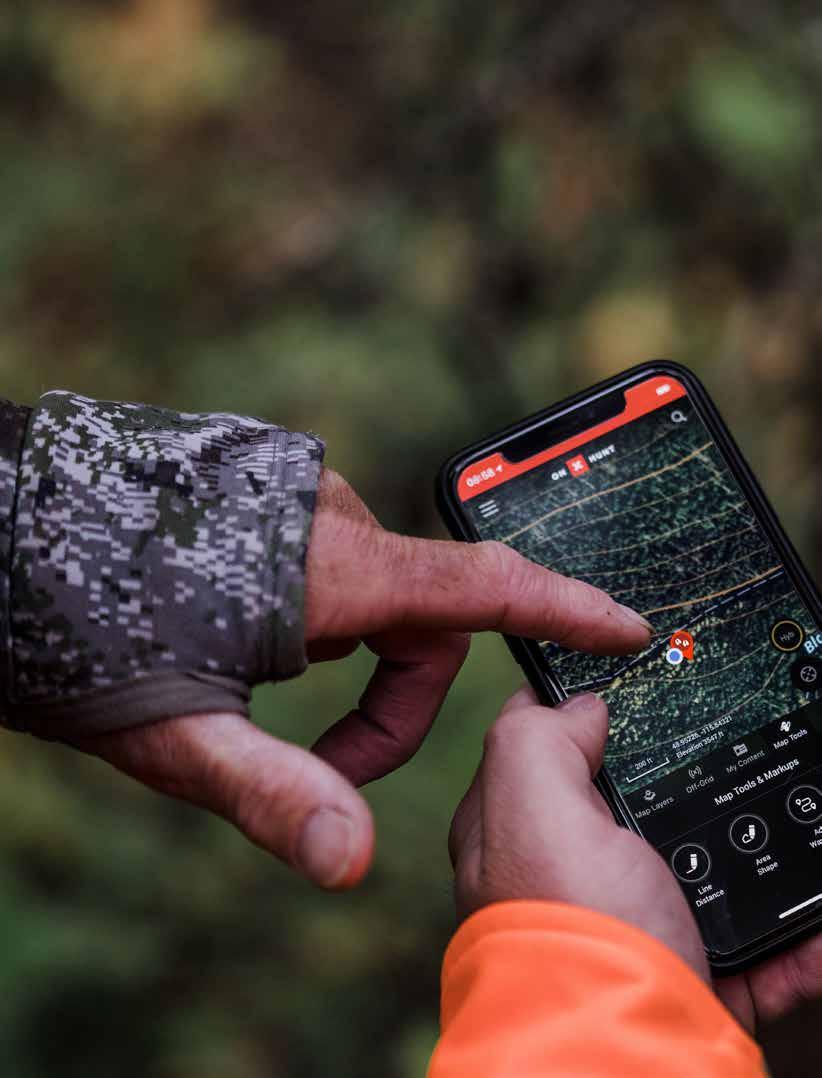
The seemingly random sign said there’d be a big old bull. Having already covered a dozen miles and umpteen different drainages without hearing a bugle or seeing an elk, I figured why the heck not?

Shortly thereafter, I came across a freshly used wallow bigger than my F-150 and thought someone had good reason for making a sign reading Old Bulls Cutoff, which certainly won’t show up on any map. Right before dark I heard him – more a cautious grunt than a full-on bugle. He was close, but I never laid eyes on him and got the impression that he was on edge. Soon I’d find out why.
I’ve always found it easy to romanticize going at things alone –like hunting. It’s never difficult to fantasize about going deep into the backcountry solo and coming out with a pack overflowing with meat and some giant elk antlers. And who doesn’t want to be selfreliant? No one else to blame for failures and no one else deserving of credit for success.
These romantic notions, dreamed up during the dark of previous winters, push me to hunt alone most often. But if I’m being truthful, the dedicated solo hunter in me is usually severely compromised about two miles and no elk sightings into the hunt. I catch myself talking – to myself.
Day 1 – and Night 1 – are always the hardest. It’s easy to miss the family. To wish you had someone else to share a lack of animal sightings with. To bargain a reason for why you need to get home early. My solution has always been to keep walking. Often this is at the expense of slowing down and glassing or doing other things that might help make the hunt successful, but stopping gives too much time to think.
Nights alone are the true test of my mental fortitude – when I’m forced to stop moving. There’s nothing I cherish more than nights spent in the backcountry with good friends or family around the fire. But alone, those same nights feel more about survival – counting down the minutes until daybreak. Usually, it’s nothing more than mental survival. Overcoming the sound of a breaking twig or the rustle of the wind. Almost always the perceived threats are figments of an overactive solitary imagination.
Darkness had closed in. The old bull never showed at the wallow after sounding off. Vowing to cut him off in the morning, I slipped back a half mile downwind to a good campsite.
After throwing some water on the stove, I pitched my tarp – the one without the door – while the water heated to a boil. That’s when it started.
The moment I first heard them I thought, “Oh, that’s interesting: wolves.” And next, “Crap, I hope they don’t scare my elk away.”
Then I realized they were less than 100 yards away, over a little knoll, and closing in on me from straight downwind – they knew I was there, and they either didn’t care or I was their reason for the commotion. It’s at that moment I began to feel very small and alone, with a little headlamp and a bag of freeze-dried in my hand and not much else.
When I’ve always thought of – and heard – wolves howling, it’s mostly been the long serenading howl at the moon type of thing, and I’ve never really felt too scared of those wolves. Grizzly bears: terrified. Wolves: eh. There actually was a full moon this time, but these wolves weren’t in the howling mood – it was more of a growlbark-howl type of war preparation, like a giant pack of rabid street dogs.
I felt a little silly clutching my longbow, arrow nocked, with a can of bear spray in my pocket, scanning the darkness with my dimming headlamp. (I’m working on mastering the Stoic acceptance of fate Christopher Ross speaks so convincingly of on page 50, but I don’t think I’m quite there yet.) But, what else was I going to do? Keep eating my freeze dried while sitting on a log in the dark?
The fire I sprang to life helped a bit.
Obviously, I’m still here after a very fitful night’s sleep – or nearly complete lack thereof. The wolves moved off a ways after the fire but continued to talk until 3 a.m. Daylight was a comforting sight. I refocused and searched for that bull, but his better judgement seemed to have taken him out of the valley.
It’s a little embarrassing admitting you got the crap scared out of you. There’s something lost in translation when you try to tell people about it – you had to be there. If someone had been there to experience it with me – they’d understand – but it wouldn’t have been quite the same experience. In hindsight, the wolves probably had other priorities than me on their minds; in the moment, though, their intentions seemed quite unclear.
I can’t honestly say I have more fun hunting alone, but it certainly has afforded opportunites for personal growth and, safely in the rearview mirror, some good memories. So, after some serious thoughts about partnering up for the rest of the season, I decided to hop back on the horse solo again and keep working on my Stoicism.
-Zack Williams, editor
